© ROOT-NATION.com - Use of content is permitted with a backlink.
At the end of August, Xiaomi announced that stops using the Mi prefix in the names of its new devices. A few weeks after that, the company held a fairly large-scale event, during which it showed the first smartphones without Mi branding on the global market. Undoubtedly, the most interesting of them was the flagship of the updated Xiaomi 11T series – the Xiaomi 11T Pro. In this review, we will get acquainted in detail with the new product and all its features, of which, I will say running ahead, there are many.
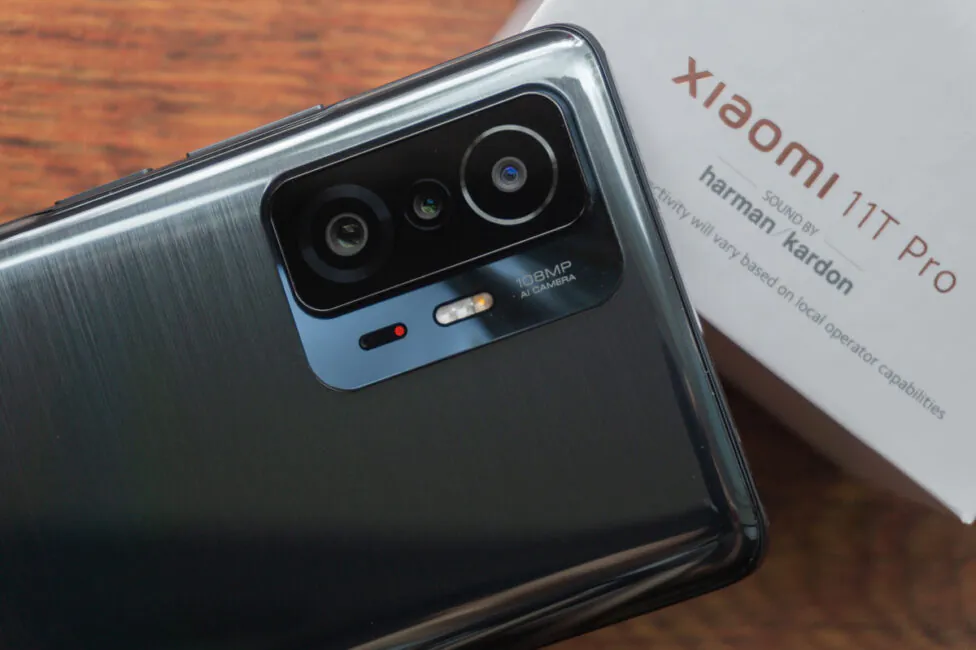
Xiaomi 11T Pro video review
Don’t want to read? Watch this instead:

Full specifications of the Xiaomi 11T Pro
| NETWORK | Technology | GSM / HSPA / LTE / 5G |
|---|
| LAUNCH | Announced | 2021, September 15 |
|---|---|---|
| Status | Released |
| BODY | Dimensions | 164.1 x 76.9 x 8.8 mm (6.46 x 3.03 x 0.35 in) |
|---|---|---|
| Weight | 204 g (7.20 oz) | |
| Build | Glass front (Gorilla Glass Victus), aluminum frame, glass back | |
| SIM | Dual SIM (Nano-SIM, dual stand-by) | |
| IP53, dust and splash protection |
| DISPLAY | Type | AMOLED, Dolby Vision, 1B colors, 120Hz, HDR10+, 800 nits (typ), 1000 nits (peak) |
|---|---|---|
| Size | 6.67 inches, 107.4 cm2 (~85.1% screen-to-body ratio) | |
| Resolution | 1080 x 2400 pixels, 20:9 ratio (~395 ppi density) | |
| Protection | Corning Gorilla Glass Victus |
| PLATFORM | OS | Android 11, MIUI 12.5 |
|---|---|---|
| Chipset | Qualcomm SM8350 Snapdragon 888 5G (5 nm) | |
| CPU | Octa-core (1×2.84 GHz Kryo 680 & 3×2.42 GHz Kryo 680 & 4×1.80 GHz Kryo 680) | |
| GPU | Adreno 660 |
| MEMORY | Card slot | No |
|---|---|---|
| Internal | 128GB 8GB RAM, 256GB 8GB RAM, 256GB 12GB RAM | |
| UFS 3.1 |
| MAIN CAMERA | Triple | 108 MP, f/1.8, 26mm (wide), 1/1.52″, 0.7µm, PDAF 8 MP, f/2.2, 120˚ (ultrawide), 1/4″, 1.12µm 5 MP, f/2.4, 50mm (telephoto macro), 1/5.0″, 1.12µm, AF |
|---|---|---|
| Features | Dual-LED dual-tone flash, HDR, panorama | |
| Video | 8K@30fps, 4K@30/60fps, 1080p@30/60/120/240/960, HDR10+, gyro-EIS |
| SELFIE CAMERA | Single | 16 MP, f/2.5, (wide), 1/3.06″, 1.0µm |
|---|---|---|
| Video | 1080p@30fps |
| SOUND | Loudspeaker | Yes, with stereo speakers |
|---|---|---|
| 3.5mm jack | No | |
| Tuned by Harman Kardon |
| COMMS | WLAN | Wi-Fi 802.11 a/b/g/n/ac/6, dual-band, Wi-Fi Direct, hotspot |
|---|---|---|
| Bluetooth | 5.2, A2DP, LE, aptX HD, aptX Adaptive | |
| GPS | Yes, with dual-band A-GPS, GLONASS, GALILEO, BDS | |
| NFC | Yes | |
| Infrared port | Yes | |
| Radio | No | |
| USB | USB Type-C 2.0, USB On-The-Go |
| FEATURES | Sensors | Fingerprint (side-mounted), accelerometer, gyro, proximity, compass |
|---|
| BATTERY | Type | Li-Po 5000 mAh, non-removable |
|---|---|---|
| Charging | Fast charging 120W, 72% in 10 min, 100% in 17 min (advertised) Power Delivery 3.0 Quick Charge 3+ |
| MISC | Colors | Meteorite Gray, Moonlight White, Celestial Blue |
|---|---|---|
| Price | About 650 EUR |
What’s in the box
The smartphone comes in a relatively large white cardboard box with a minimalistic design. The most interesting, as always, is inside the box and in this case it is not only the Xiaomi 11T Pro smartphone. In addition to it, you can find a huge Xiaomi HyperCharge 120W power adapter, a meter-long USB Type-A/Type-C cable, a primitive transparent silicone case and a SIM eject tool. And various documentation, as usual.
Of course, it is the power adapter that draws all the attention. Its dimensions are really impressive and even resemble power supplies from some ultrabooks. At the same time, it weighs a little less than the smartphone itself – almost 200 g. However, what may disappoint some users is the USB Type-A output. It would be nice to see USB-C here. This isn’t important though since most smartphones come without an adapter at all.
There is not much to say about the bundled silicone case. In execution, it resembles dozens of other complete covers, but it will be enough for the first time. All the necessary slots are there, the bumber above the screen is also present and the camera unit is protected. You shouldn’t have expected anything more than that, but in any case it is better this way than without a cover at all. In addition, a protective film is initially pasted on the smartphone screen.
Read also: Xiaomi Mi 11i review: the most affordable flagship on Snapdragon 888
Design, materials and build quality
In places Xiaomi 11T Pro is similar to other smartphones of the manufacturer. This is noticeable both in its shape and in some other details, such as the design of the front panel and the arrangement of cameras. There are also enough unique design elements that were not previously found in the manufacturer’s smartphones.
In front it’s a typical modern smartphone: thin bezels, a front camera embedded in the screen in the center. The manufacturer in no way focuses on the notch with the camera. Ik]n more affordable Xiaomi smartphones, the module is often distinguished with a silver edging, especially if it is located in the center.
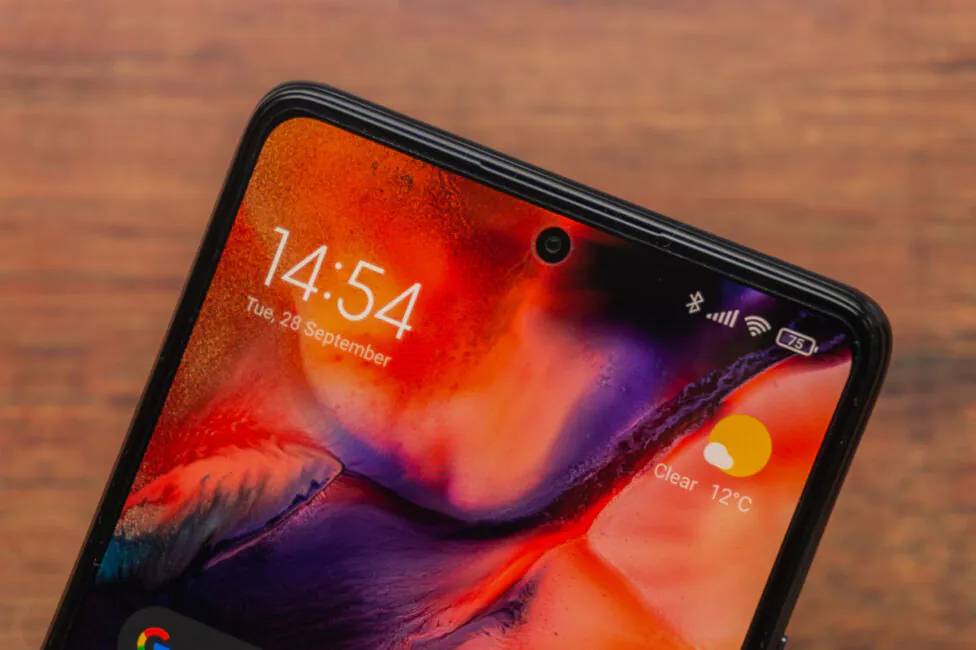
The bezels are certainly not the thinnest we’ve ever seen. Visually, Xiaomi did not try to make them thinner due to the bends of the glass, and on top of that, they turned out to be of different widths. Traditionally, the top and bottom bezels are wider than the bezels on the sides. All the usual stuff.
The back panel itself is more interesting in terms of design, and there is already something to note… some controversial decisions from the designers. Despite the noticeably pronounced rectangular shape of the case, the panel is covered with glass with smooth rounding and this is even good.
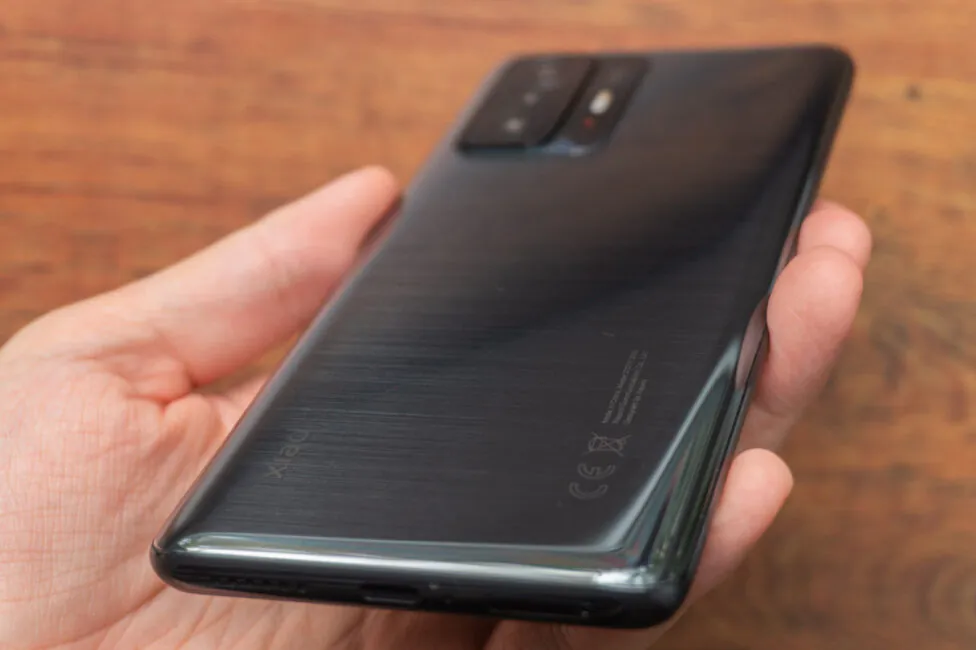
The height of the camera block is quite standard, as for the company’s smartphones, but it differs from other models in its width. Far from the level of the Xiaomi Mi 11 Ultra with its massive unit with a screen, but clearly wider than in the Xiaomi Mi 11i or the Redmi Note 10 series of smartphones. in fact, no new elements or modules appeared.
The block is rectangular with rounded corners, and the cameras themselves are placed on a separate and narrower “pedestal”, while to the right of them on a wide base is everything else. It is also pleasing that the block itself does not protrude very much above the surface of the case.
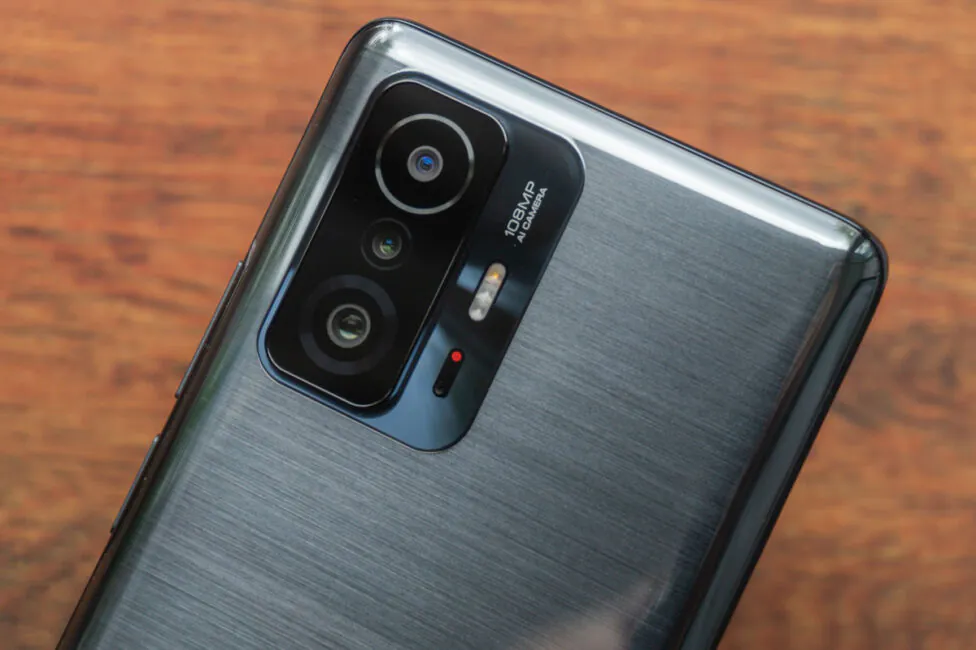
Moving on to the finish and materials of the case. As I mentioned earlier, the back panel of the smartphone is covered with glass. Only the manufacturer does not specify which one is used. The glass, alas, is glossy, but with an oleophobic coating. Although the coating does not save much and the smartphone still gets dirty quick.

And apparently, this only applies to a specific gray color of the case (Meteorite Gray), like our model here. The Xiaomi 11T Pro also comes in white and blue with a gradient (Moonlight White and Celestial Blue) and their description indicates that an anti-reflective coating is used. If you want a more practical matte finish, choose white or blue 11T Pro.

But the gray color has one interesting feature and it lies in the pattern under the glass in the form of brushed dark gray metal. The pattern looks nice, very much like real metal. For Xiaomi smartphones, such a pattern is definitely new, but we already saw something similar in the Motorola One Zoom a few years ago. But in any case, this solution looks much more interesting than some kind of gradient, as for me.
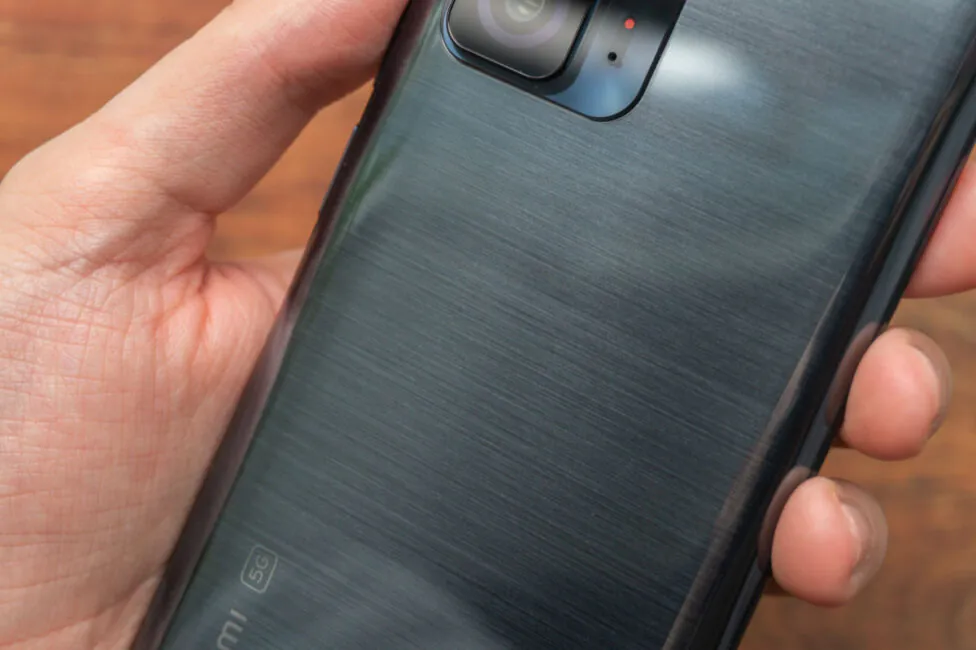
The front, in turn, uses the new Gorilla Glass Victus, but with the edge the situation is ambiguous. According to some, the base is aluminum and covered with a thick layer of paint, but it doesn’t feel like metal at all. The edge itself doesn’t have the usual dielectric inserts, but there are long inserts made of glossy plastic at the top and bottom ends. So most likely it’s just high-quality plastic. What is no less interesting is that the upper edge is flat, while the lower one simply repeats the rounded shape.
The body of the smartphone is protected from dust and splashes. So it cannot be immersed under water, but raindrops should not harm it. Of course, this is far from the ultimate dream and full-fledged IP68 standard would definitely not hurt the device. Moreover, this is an advanced model in the new line, but you can’t have it all.
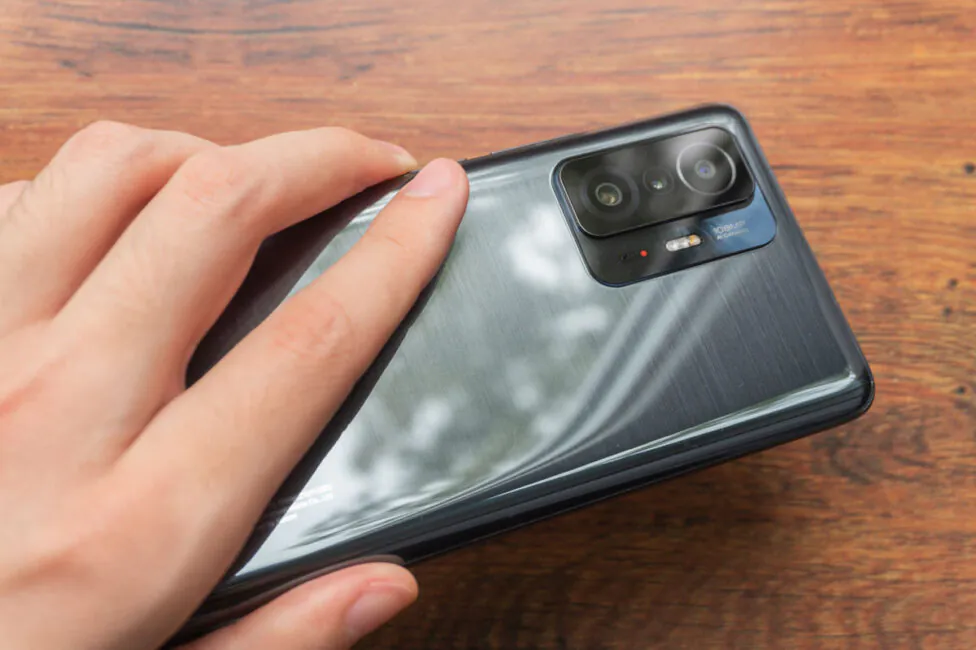
Read also: Xiaomi Mi 11 Lite review: an imposter?
Configuration
In the front, in the upper part, there is a slit of the supposedly earpiece speaker (but in fact, this is not entirely true), to the left are the light and proximity sensors, and in the center of the screen is the front-facing camera.
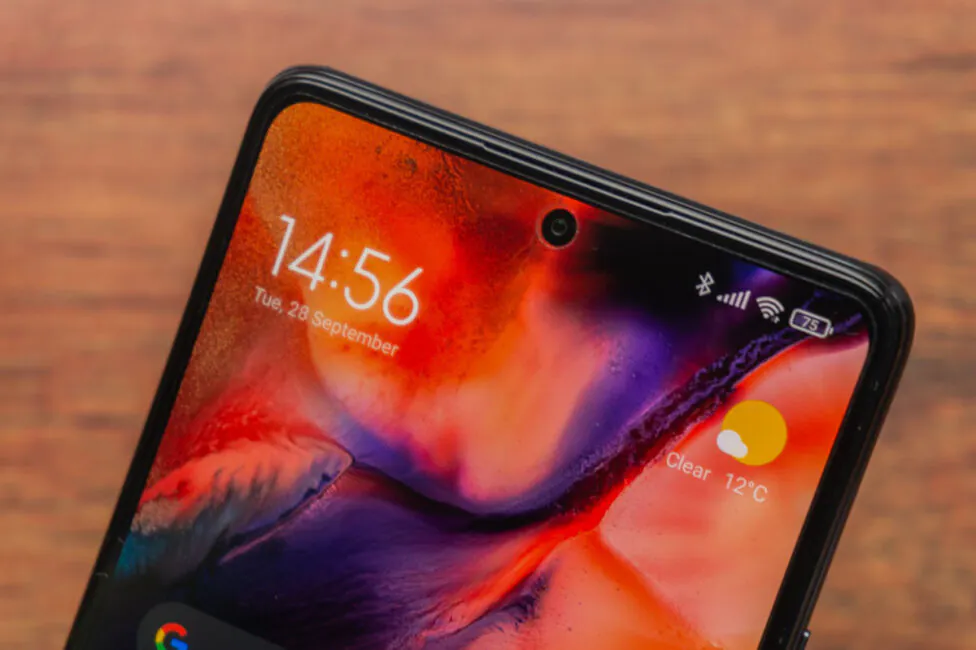
On the right side there is a volume rocker and a large power button combined with a fingerprint scanner. The left side is completely empty.
Above there is an IrDA window, a silvery Sound by Harman/Kardon inscription, round slots with a multimedia speaker and a microphone hole.

At the bottom, there are similar slots for the main multimedia speaker, a USB Type-C port in the center, a main microphone and a slot for two nanoSIM cards.
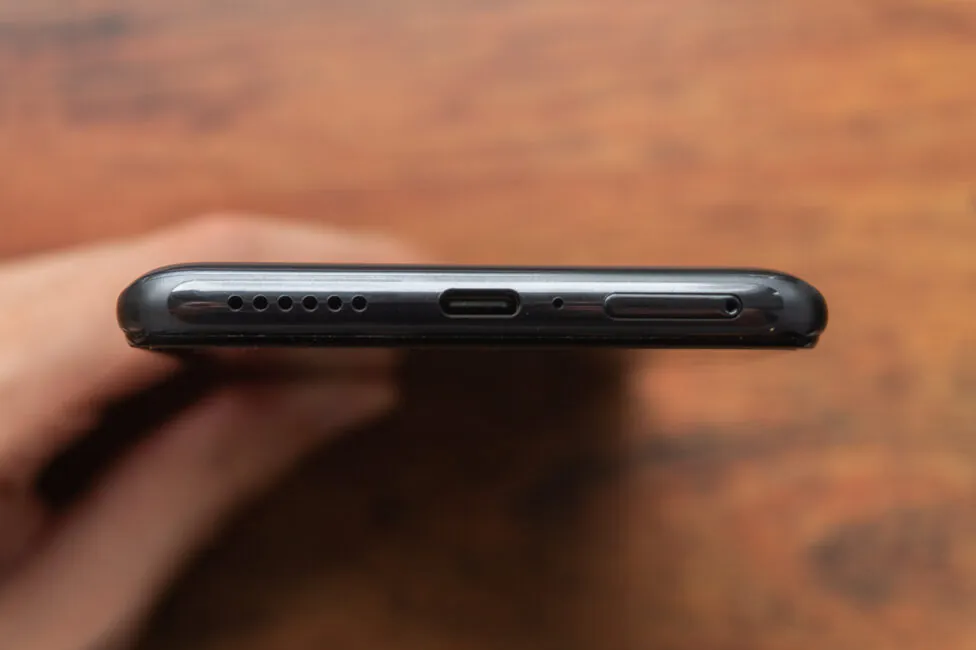
At the back is a block with three camera modules, autofocus sensors, a flash, another microphone and inscriptions. At the bottom there is a vertical Xiaomi logo with 5G markings and other info.
Ergonomics
Xiaomi 11T Pro is a large smartphone with a 6.67″ display and a 164.1 x 76.9 x 8.8 mm body. It is only slightly shorter than the Xiaomi Mi 11 Ultra, but at the same time noticeably wider than the latter, so it’s definitely not a particularly convenient smartphone and it will be extremely difficult to use it with one hand.
Due to the rounded glass at the back and the rough coating of the edge, there are no problems with the grip. The power button is placed at a very comfortable height, and you don’t have to reach for the volume control button or change the grip. On a flat surface, the smartphone will wobble when you tap the screen, despite the not too protruding camera unit.
Read also: Xiaomi Mi 11 Ultra review: Powerful Flagship to Shut Up the Skeptics
Display
The Xiaomi 11T Pro has a 6.67″ AMOLED screen with a Full HD+ resolution (2400×1080 pixels). The aspect ratio, of course, is elongated (20:9). The pixel density is about 395 ppi, the manufacturer claims the peak the brightness is at 1000 nits, the refresh rate is boosted to 120 Hz, and the sampling rate is 480 Hz.
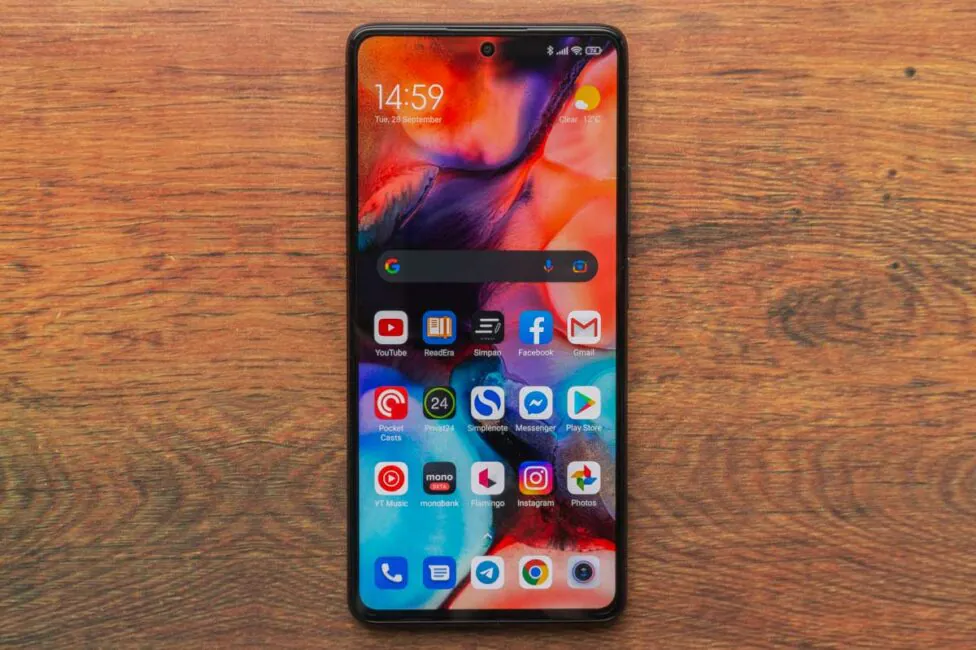
The display supports many technologies such as HDR10+ and Dolby Vision. Plus, there are a number of Xiaomi developments, which I will talk about separately. Color reproduction corresponds to the DCI-P3 color space, the display shows more than a billion colors, the promised contrast is 5,000,000:1. In addition, it received an A + rating from DisplayMate.
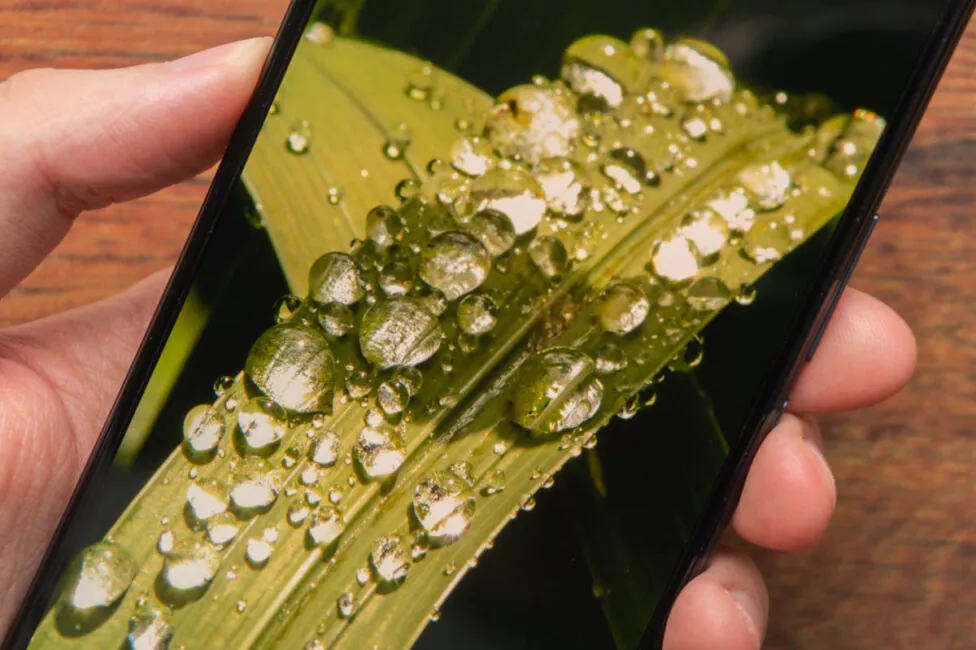
It’s a near-flagship display, but in some ways it is inferior to the displays in the Xiaomi Mi 11 and especially the Mi 11 Ultra. So it’s not the best screen there is, but it is very close to this title in all key parameters. It is bright enough and very contrasty, there are no problems with readability outdoors. The color rendering will depend on the selected mode in the settings and may, for example, adapt depending on the lighting. The viewing angles are wide and only white at an angle can take on a slight greenish tint.
There are several color display modes: vivid, saturated, standard and advanced. In the latter, you can choose the default calibration, DCI-P3 coverage or sRGB. There is also the ability to adjust the hue, saturation, brightness, contrast and color gamut. It’s a complete set for manual adjustment of color reproduction, if other modes are not suitable for some reason. Plus, in each of the modes, you can change the color temperature.
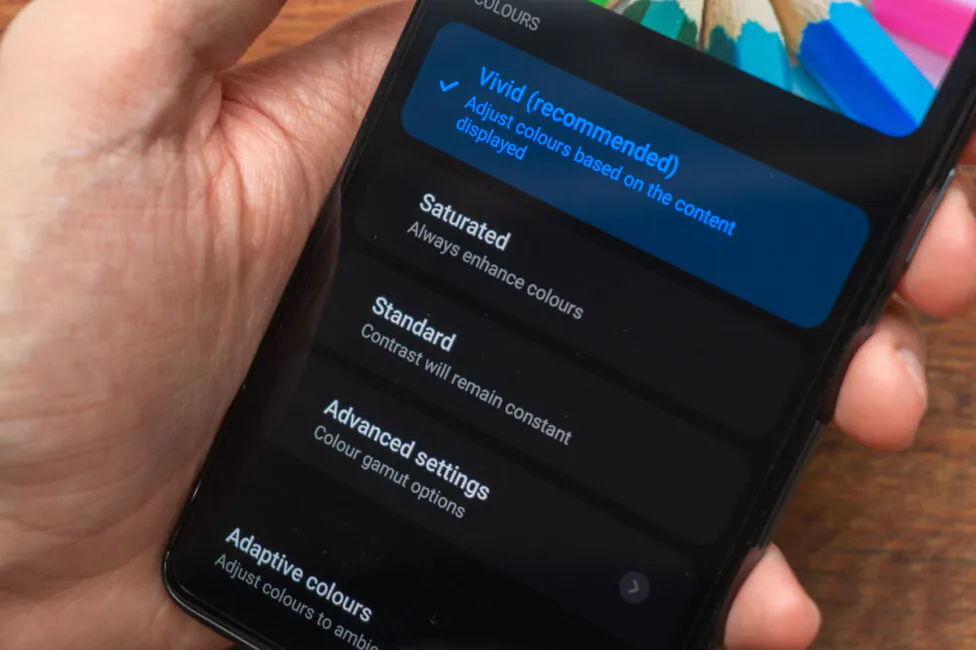
There are two refresh rate modes in total: classic 60 Hz and maximum possible 120 Hz, without any intermediate options. The second is dynamic and depending on the content on the screen, the frequency can be reduced to 90 or 60 Hz. The UI and all system apps are displayed at a maximum frequency of 120 Hz. The same frequency works in a number of apps and some games, but some apps for video playback or photo viewing are often displayed in 60 Hz mode in order to save battery power.

In the screen options, you can find a separate item for rendering with AI with several settings: super resolution, AI image enhancement, AI HDR enhancement and MEMC. I talked about each of the options in more detail in the review of Xiaomi Mi 11. They are all working, but you are unlikely to use them often.
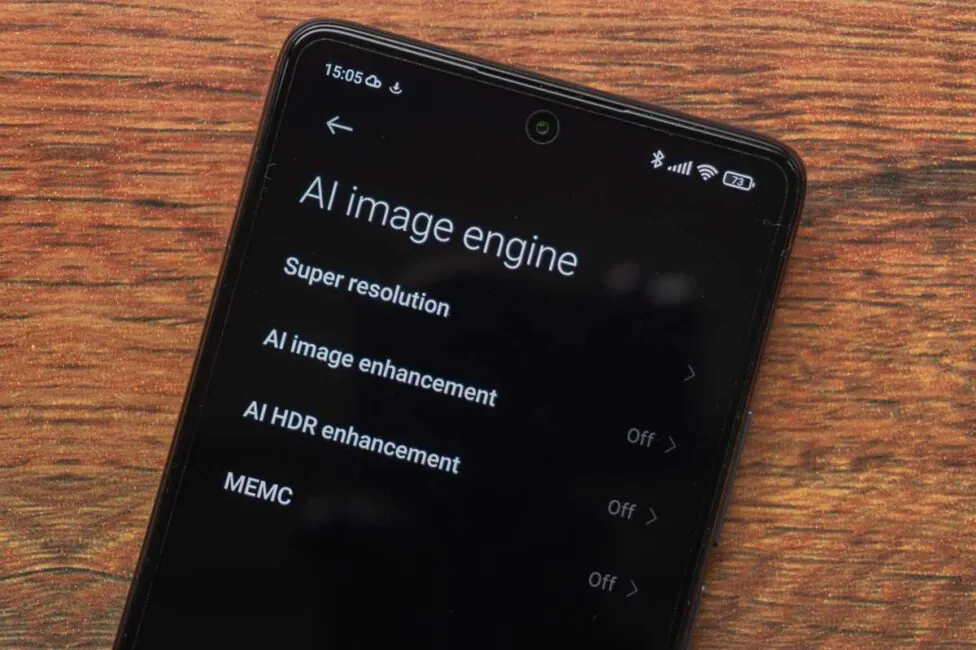
I find the DC dimming option much more useful to eliminate flicker and reduce eye strain in low light conditions. This smartphone has it, but it only works in 60 Hz mode. So you have to choose between smooth image and flicker elimination at low brightness. All other parameters are familiar to the MIUI shell users. There are light/dark system themes and adaptation of apps with no native dark theme. You can adjust the text size, the behavior of the screen when the device is in VR mode, select full screen mode for apps, and enable auto-rotate for the screen.
The active screen options and notification effects are available separately. Displaying the time on the deactivated screen can be configured. There are more than 20 built-in watchfaces, almost each can be customized or even customized with a custom image. There are three notification effects available, besides just turning on the screen.
Read also: Xiaomi Mi 11i review: the most affordable flagship on Snapdragon 888
Performance
Inside the Xiaomi 11T Pro we find the well-known flagship chipset Qualcomm SM8350 Snapdragon 888 5G. This is the same original Snapdragon 888, not the Plus version with overclocked frequencies. The platform is based on a 5-nm process technology, it includes 8 cores, divided into 3 clusters: 1 Kryo 680 core operates at a maximum clock speed of up to 2.84 GHz, 3 more Kryo 680 cores with a clock speed of up to 2.42 GHz and 4 Kryo 680 cores clocked at up to 1.8 GHz. Processing graphics tasks is entrusted to an equally familiar Adreno 660 graphics accelerator.
From other smartphones based on the 888, we know that the chip itself is very productive and shows extremely high results in synthetic tests. However, it tends to heat up. Of course, the Xiaomi 11T Pro did not get around this nuance either. So, after 15 minutes, the processor performance decreases by 29%, and in after 30 minutes by 27%.
The familiar LiquidCool technology is used to cool the hardware. According to my personal feelings, the body of the device under load heats up less than other smartphones with Snapdragon 888, which I tested earlier. I am talking about the Xiaomi Mi 11, the OnePlus 9, and the ASUS Zenfone 8 – all of them get hotter than the 11T Pro. The smartphone, of course, becomes warm, which is obvious, but it does not burn your hands. Although this does not mean that there is no such thing as overheating at all. The smartphone does not pass some lengthy stress tests at all, showing a notification obout overheating and in extreme cases it can even automatically turn off some networks and prohibit using the camera until it cools down.
RAM in a smartphone can be 8 or 12 GB, depending on the version. The memory is fast, LPDDR5 type. Both 8 or 12 of GB are sufficient for today and the 11T Pro does not experience any difficulties at all when many apps are running at the same time. They don’t reboot and multitasking is great.

The amount of storage also depends on the model, and there are two options now: 128 or 256 GB. Drives in both cases will be fast, UFS 3.1. Our pre-sale phone has 256 GB of storage, of which 224.19 GB is reserved for user. It is worth deciding on the option in advance, since you can’t expand the memory with a microSD card.
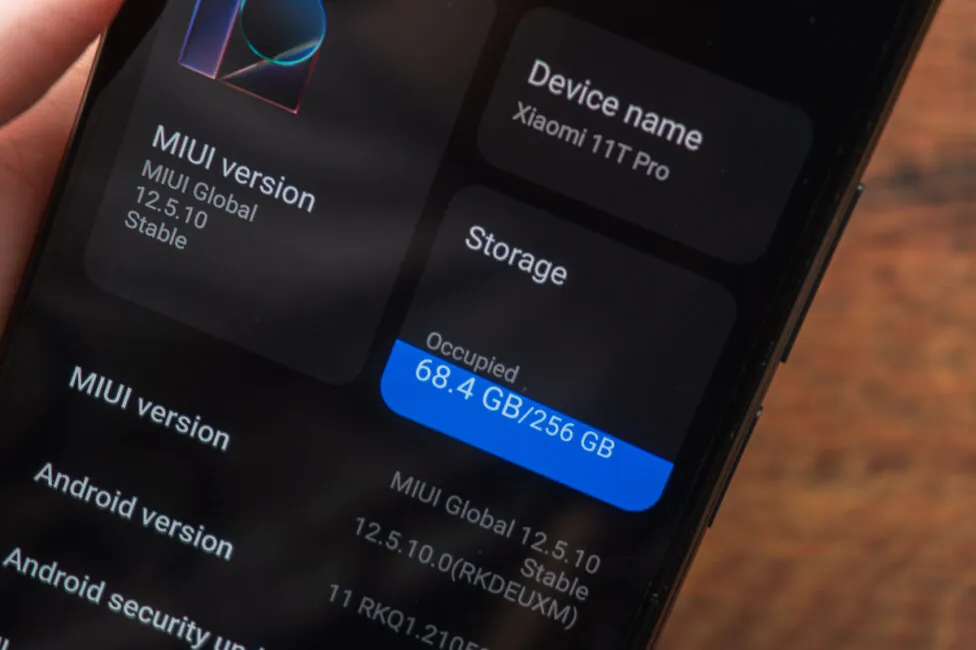
The phone is very fast. The UI and all familiar apps work quickly and smoothly, the gadget does not lag while performing any daily tasks. The smartphone also copes with games, you can play any demanding titles, but do not forget about overheating. You shouldn’t count on long sessions. Here is what the average FPS measurements showed, taken using the GameBench utility:
- Call of Duty: Mobile – very high, all effects are on (except rays), Battlefront mode ~ 60 FPS; Battle Royale ~ 60 FPS
- Genshin Impact – maximum graphic settings with all effects, ~ 53 FPS
- PUBG Mobile – ultra graphics settings with 2x anti-aliasing and shadows (no reflections), ~ 40 FPS (game limit)
- Shadowgun Legends – ultra graphics, ~ 55 FPS
Cameras
The set of cameras in the new Xiaomi 11T Pro is very similar to that used earlier in the Xiaomi Mi 11i. In any case, their characteristics coincide completely, with the exception of the viewing angle of the ultra-wide-angle module with a difference of 1°, which does not play any role. There are three modules:
- 108 MP, f/1.8, 26mm (wide), 1/1.52″, 0.7µm, PDAF
- 8 MP, f/2.2, 120˚ (ultrawide), 1/4″, 1.12µm
- 5 MP, f/2.4, 50mm (telephoto macro), 1/5.0″, 1.12µm, AF
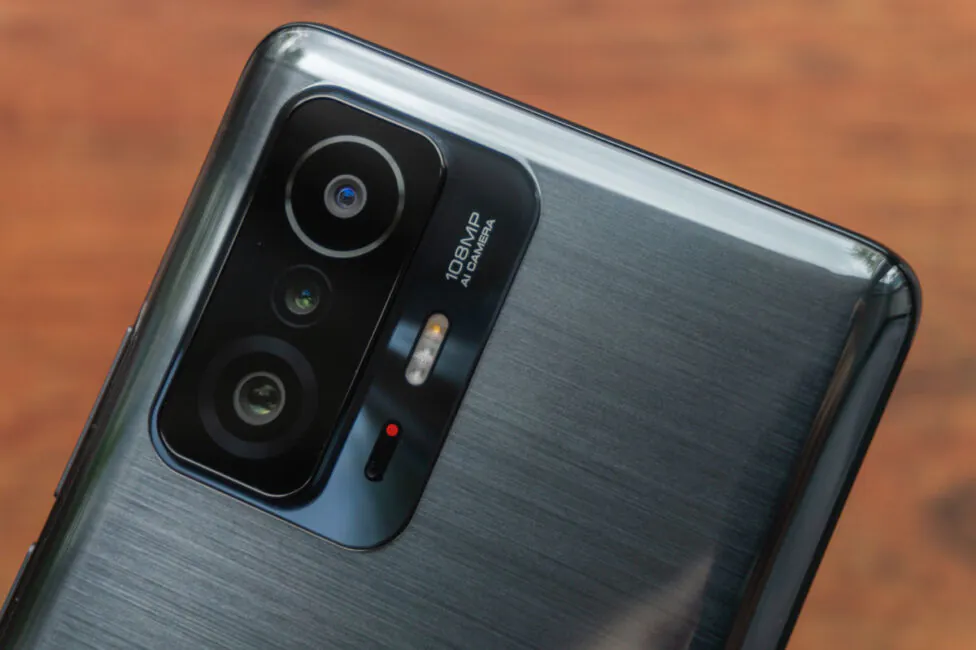
The main module is a Samsung ISOCELL HM2 sensor with a resolution of 108 megapixels and, traditionally, by default, photos are saved in a resolution of 12 megapixels. But does it make sense to use full resolution? In fact, there is, not always, but often. Outdoors, with good lighting, 108 megapixel pics are often better in all key parameters: higher detail, natural color rendition and, in general, some kind of “softer” post-processing. But if we talk about shooting indoors, then photos are clearer in standard resolution 12 megapixels. In general, this module in standard definition removes somehow artificially. Even with the AI turned off, the colors seemed to me slightly oversaturated, not to mention the excessive sharpness of the image.
EXAMPLES OF PHOTOS AND VIDEO IN FULL RESOLUTION FROM WIDE ANGLE MODULE
Photos in 108 megapixel mode show that it is possible to shoot high-quality detailed shots with a minimum amount of digital noise even in low light with this camera. It is clear that there will be much less detail at night than during the day, but do not forget about the night mode. The latter will not spoil anything, but quite the opposite: it will make the photos lighter, more detailed and help it retain more information in the dark areas. True, in such conditions, the smartphone needs to be held firmly. Due to the lack of an optical image stabilization system, images may appear blurry when shooting such scenes.
The ultra-wide-angle module takes nice photos outdoors, without offering anything special in terms of color rendition or detail. It differs in white balance from the main module, there is digital noise, but the dynamic range, admittedly, is not bad. Indoors, the results are weak, primarily due to aggressive noise cancellation and a significant difference in white balance. Auto mode often takes the scene into unnatural greenish tones. The edges of the pics are also a little blurry and all other issues appear even more than outdoors. Shooting at night is a pleasure, but use the night mode. It is also available for this module.
EXAMPLES OF PHOTOS AND VIDEO IN FULL RESOLUTION FROM THE ULTRA WIDE ANGLE MODULE
The module for macro is not the most common here, but it has an equivalent focal length of 50 mm and full autofocus. Combining these factors, we have the ability to shoot objects at a distance of about 2 to 7 cm, which is much more pleasant than a fixed 4 cm. And the results themselves are pleasing with both color rendition and depth of field. The resolution is not very high, of course, but the module definitely isn’t bad.
EXAMPLES OF PHOTOS AND VIDEO IN FULL RESOLUTION FROM THE TELEMACRO MODULE
The main wide-angle camera can shoot video in a maximum resolution of 8K at 30 FPS. But there is a limitation and in this resolution the duration of one video cannot exceed 6 minutes. As for practical use, if you shoot in 8K, then it is advisable to fix the smartphone in a stationary position. Firstly, there is no stabilization for shooting on the go, and secondly, sudden movements are very bad for the video. The rolling shutter has not gone anywhere, although in this case it is not very pronounced. But in terms of detail and color, of course, the picture is excellent.

For general everyday shooting, it is better to use 4K at 60 FPS. This mode has electronic stabilization, so you can shoot on the go, because the quality is excellent. The detail is high, the dynamic range is wide, the color reproduction is natural and the autofocus works quickly. You can also switch to 4K/30 FPS and 1080P with 30/60 FPS too, of course. Of the interesting things, HDR10+ video can be noted, but it only works in 4K at 30 FPS.

The other two modules, ultra-wide and macro, can also record video, but in 1080P at 30 FPS. In the case of an ultra-wide module, electronic stabilization works, which is good, but I would describe the quality of the videos as average.

In the case of macro, nothing really good will come of it either. The quality of the videos is low and there is no stabilization.

There are a lot of different modes for recording video here: shooting with AI, shooting with a cinematic aspect ratio, audio zoom, video clips with the ability to immediately substitute background music, video blogs, various cinema effects, cloning, recording simultaneously on the front-facing and main cameras, shooting with bokeh and more. But half of the modes work only with a resolution of 1080P and 30 FPS.
The selfie camera has 16 megapixels (f/2.5, 1/3.06″, 1.0µm). It shoots quite well during the day, with pleasant color reproduction, but as conditions deteriorate, so do the photos. But there is a separate night mode, which saves the situation a little. The maximum video resolution when shooting on the front-facing camera is 1080P at 60 FPS. But the videos come out dark, and only switching to 30 FPS eliminates this problem. Apparently some kind of bug and possibly in the future it will be fixed with software updates.
I have already partially told about the shooting modes available in the app. There is a large set for both videos and photos. There is also a manual mode and it is quite advanced. For video shooting, LOG mode is available, and you can save photos in RAW format.
Read also: realme 8 Pro vs Redmi Note 10 Pro — Mid-range smartphones head-to-head
Unlocking
The fingerprint scanner in the Xiaomi 11T Pro is not located in the screen. The classic capacitive scanner is located on the right side and is built into the physical power key. And… it works just fine. Unlocking occurs almost instantly, the scanner always works the first time. It’s quick, even if its type is not as modern as in other flagships.
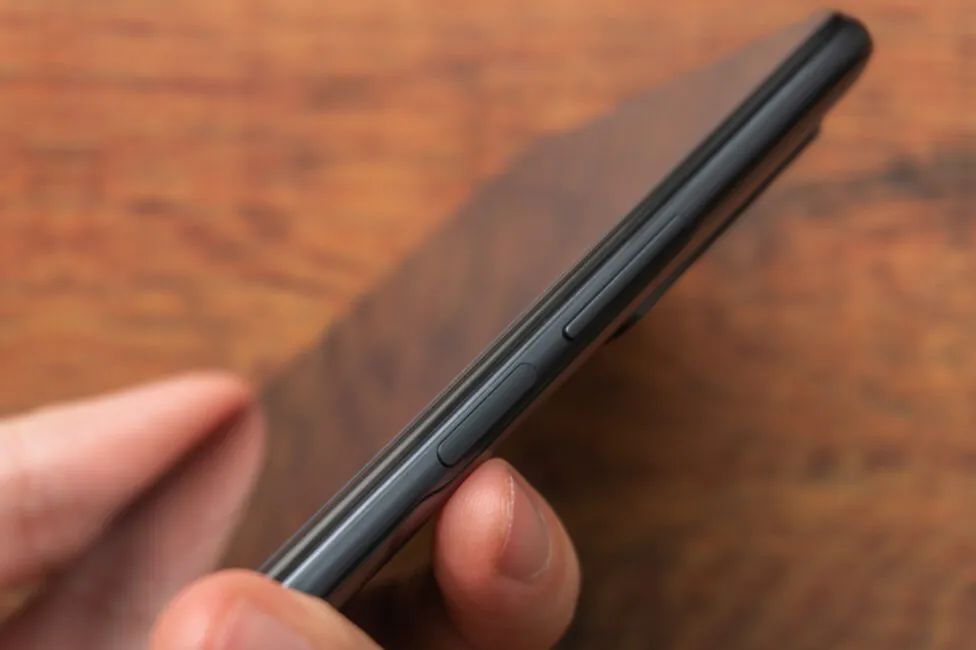
In total, you can add up to 5 prints, and you can choose the recognition method: a simple light touch on the scanner pad or physical pressing of the button. In addition, in the gesture settings, you can assign actions to a double tap on the scanner. The set of actions is limited and it is impossible, for example, to launch most apps.
Face unlocking is also available, and in terms of speed and stability it is almost as good as a scanner. In most situations, it instantly recognizes the owner and even skips the lock screen. Of course, in complete darkness it doen’t work. But if there is at least some light source, the method will work.
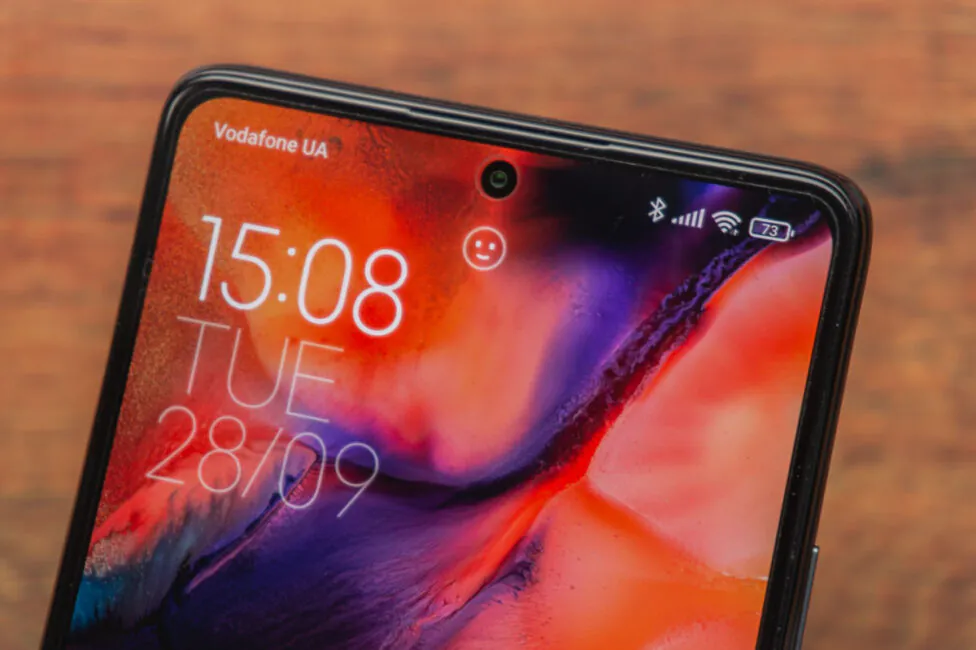
You can add two faces, or choose to stay on the lock screen after recognition. In this case, the option to hide notifications will also be available and they will be displayed only after the smartphone recognizes the owner.
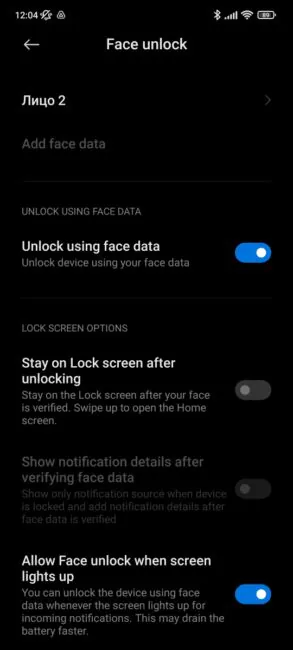
Read also: Redmi Note 10S review: Affordable smartphone with NFC and Super AMOLED
Battery life
The battery in the smartphone has a total capacity of 5000 mAh, 2500 mAh in each cell. And this was done for a reason, for fast 120W charging. A lot of different technologies are used here and there is even a separate page on the manufacturer’s website that is completely devoted to Xiaomi HyperCharge technology. But before we move on to one of the main features of the smartphone, we should talk about battery life.

And it is quite good – the smartphone lasts for a relatively long time, given its advanced hardware, a large bright display with a high refresh rate and everything else. I used the Xiaomi 11T Pro with 120 Hz mode on daily on a schedule from 8:00 to 20:00, displaying time on the deactivated screen and with the dark theme. In a mixed mode of use, the device worked on average a little more than a day from a single charge with a total of 6-6.5 hours of screen time. In the PCMark Work 3.0 test with maximum display brightness and 120 Hz, the smartphone lasted 7 hours and 6 minutes.
Finally, we move on to the Xiaomi HyperCharge 120W technology. First, it should be noted that this is one of the most powerful wired chargers in the industry. For comparison, the original Xiaomi Mi 11 was equipped with 55W charging, the Mi 11 Ultra had 67W, and now in 11T Pro supports 120W charging. Both the adapter and the smartphone heat up approximately the same while charging. There’s no wireless charging.
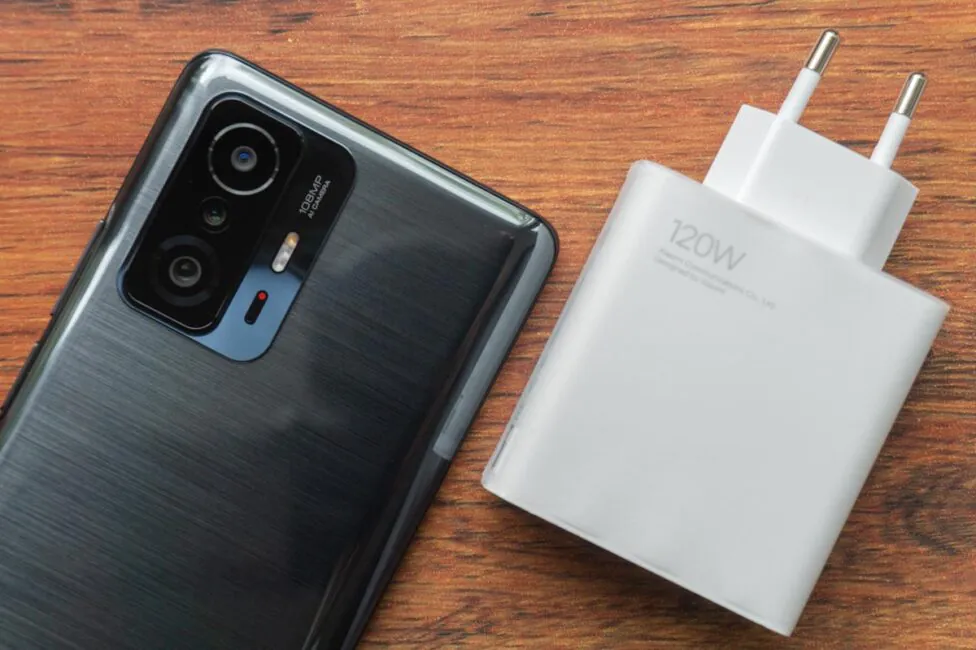
The manufacturer promises that it will take only 17 minutes to charge the smartphone from 2% to 100% with the standard adapter and cable, which is impressive! However, the time may differ and the actual measurements differ somewhat from those stated. It took the device only 21 minutes to charge from 2% to 100%; very very nice. Not 17 minutes, yes, but the 11T Pro charges twice as fast as the regular Mi 11. Even 10 minutes of charging is enough for the smartphone to last a day. Below are detailed measurements in 5 minute increments:
- 00:00 — 2%
- 00:05 — 29%
- 00:10 — 56%
- 00:15 — 79%
- 00:20 — 99%
- 00:21 — 100%
Sound and communications
The smartphone has two full-fledged speakers at top and bottom. The slit in the front is partly fake and there is no separate earpiece speaker behind it. Its role is played by the top multimedia speaker, and because of this your interlocutor will be heard better. When speaking, it perfectly fulfills its direct task: the sound is clear, the volume is enough. Multimedia speakers are developed in collaboration with Harman/Kardon.

Together, the speakers form a full-fledged stereo pair, but they sound slightly different. The upper one sounds less clear and not as loud as the lower one. The latter provides volume and we get an okay sound in the end. Not the level of expensive flagships, but quite decent for a mid-range smartphone. The speakers are compatible with Dolby Atmos effects, which shouldn’t be neglected by the way. They really make a difference.
The sound in the headphones is not bad; Dolby Atmos effects with a graphic equalizer are supported. But if you turn them off, then the headphone profiles and the Mi Sound equalizer will become available. All effects work, by the way. Wired headphones need an adapter an adapter, since there is no 3.5 mm audio jack in the 11T Pro.
Plus, the smartphone has a linear vibration motor with an X-axis measuring 8×9 mm. It provides a crisp and pleasant tactile feedback that accompanies gestures and various system switches and sliders. The level of tactile feedback can be adjusted in the settings based on personal preference.

The set of wireless networks in Xiaomi 11T Pro has everything. There is a Snapdragon X60 5G modem, the modern Wi-Fi 6 standard, Bluetooth 5.2 (A2DP, LE, aptX HD, aptX Adaptive), as well as GPS (A-GPS, GLONASS, GALILEO, BDS) and an NFC module. There’s also an infrared port, it is located on the top, as always. All modules work great, I have not noticed any problems.
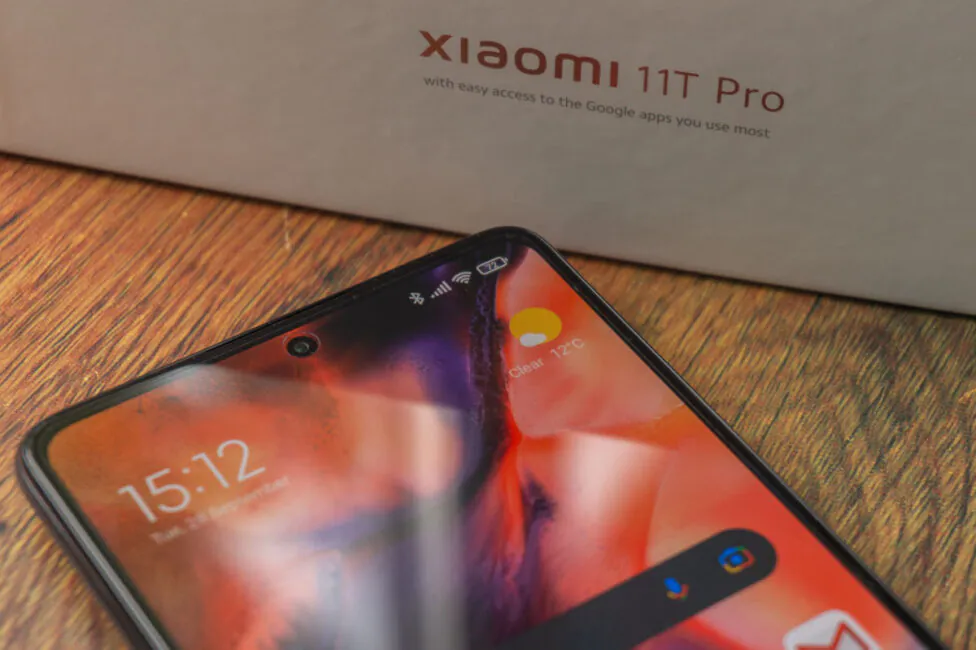
Read also: Redmi Buds 3 Pro review: advanced TWS for a good price
Firmware and software
The phone uses Android 11 operating system with the proprietary MIUI 12.5 shell. We have already talked about MIUI many times, this is a popular shell with its own interesting features. There’s everything: gestures, customization tools, advanced built-in apps. There are double and triple tapping on the back of the smartphone to perform preset actions, for example.
By the way, there are other news related to the software and the new series of smartphones. Even before the global presentation of Xiaomi 11T and 11T Pro, the company announced that new devices will be getting new versions of Android OS for three years, and security patches for four. This is a great trend, and over the past year, many manufacturers have promised extended support for their devices, which is good news.
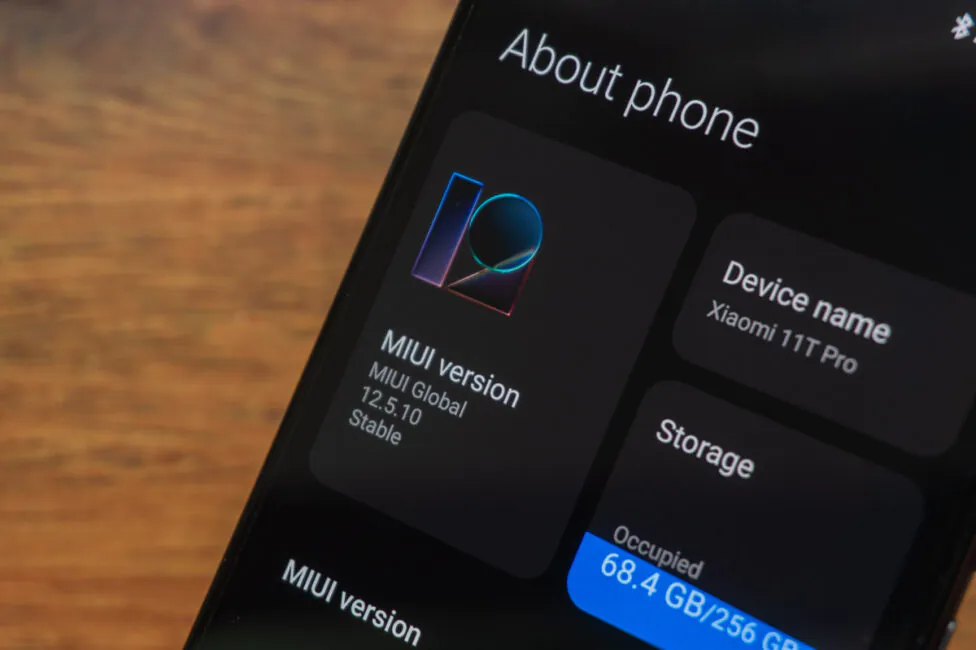
Verdict
The Xiaomi 11T Pro is a good balanced flagship with an unusual design and splash protection, a high-quality AMOLED display with a 120 Hz refresh rate, powerful hardware, stereo sound and, of course, incredibly fast 120 W charging. Even if the battery life is not the best, in conjunction with such a charging speed you can’t complain about it. Video capabilities are fine, while with post-processing photos in standard definition there are still some issues. I hope they will be fixed in the next software update.
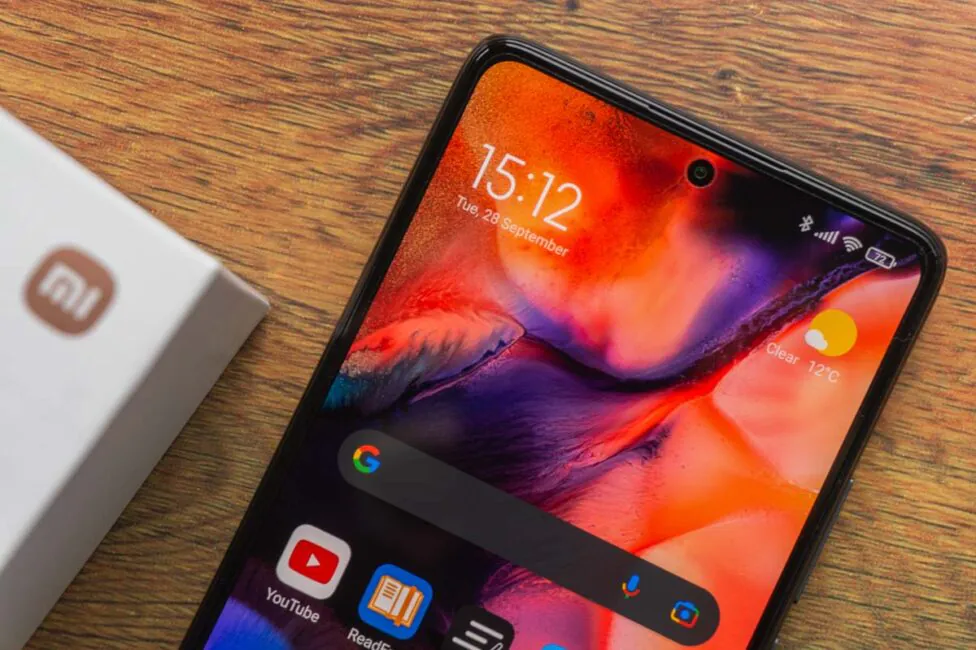
However, this isn’t a full replacement for some smartphones of the original Mi 11 series, because in order for the smartphone to be relatively inexpensive, the manufacturer had to make some compromises. It does not have, for example, full moisture protection or wireless charging, as well as a separate telephoto lens, and the main module lacks optical stabilization. But if it’s fine by you, then the rest of the Xiaomi 11T Pro will not disappoint.
Read also:
- Redmi Note 10S review: Affordable smartphone with NFC and Super AMOLED
- OPPO Find X3 Pro review: Innovative microscope with a bold design

Subscribe to our accounts:


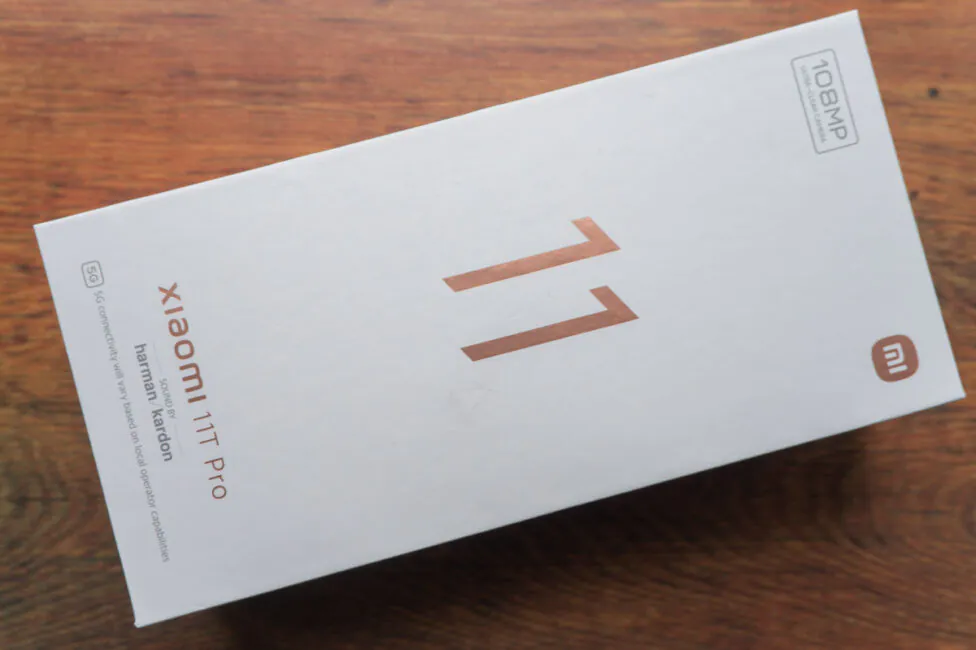
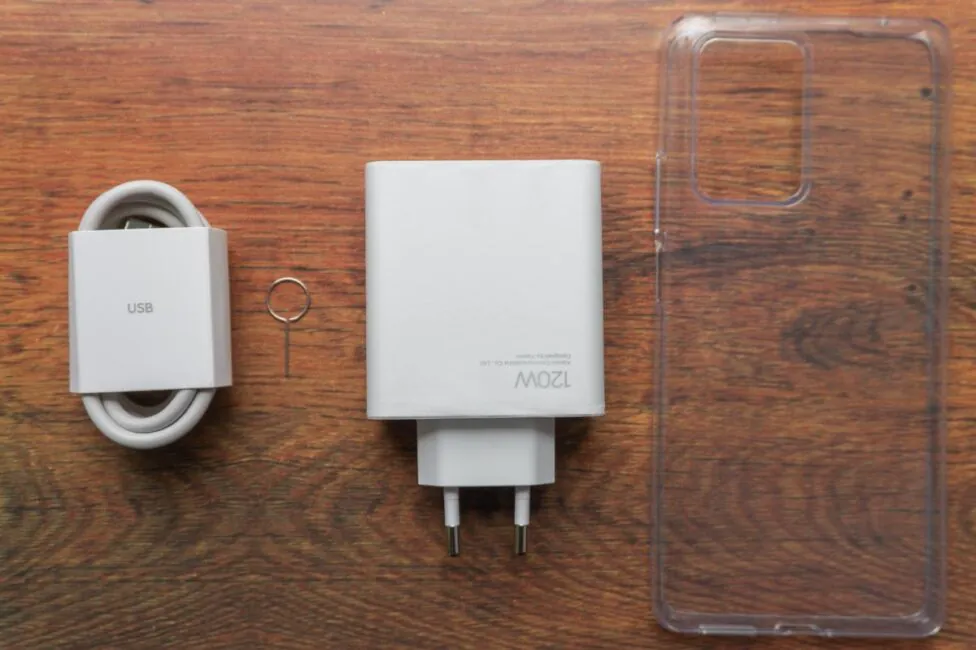
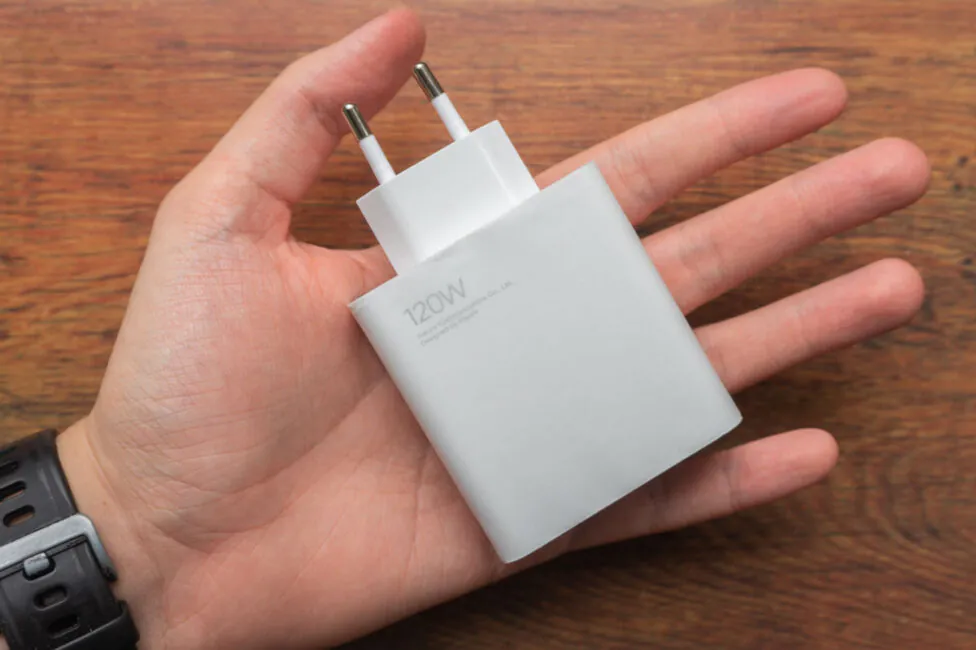
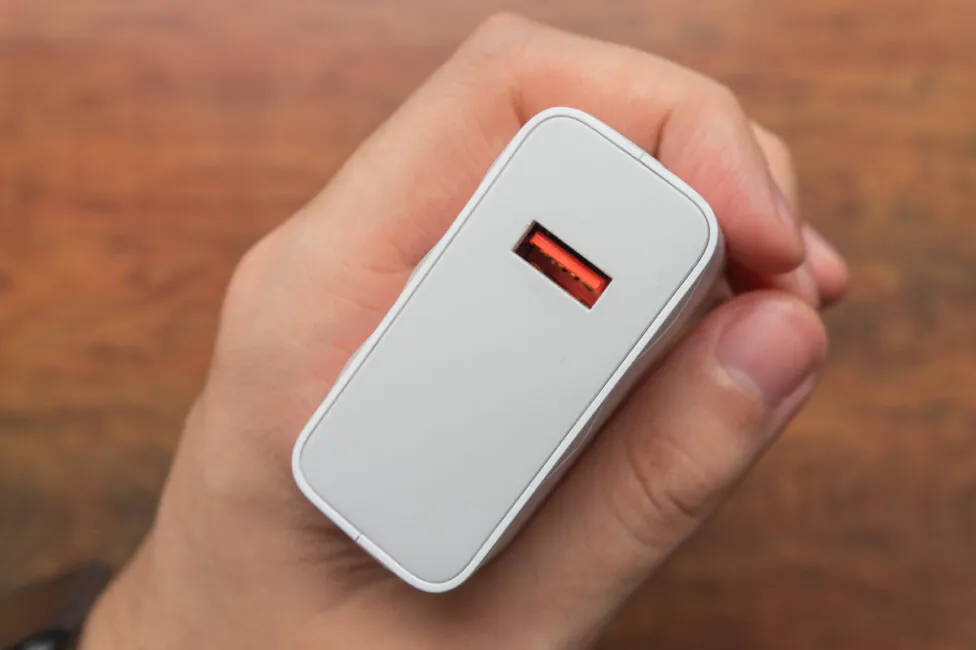


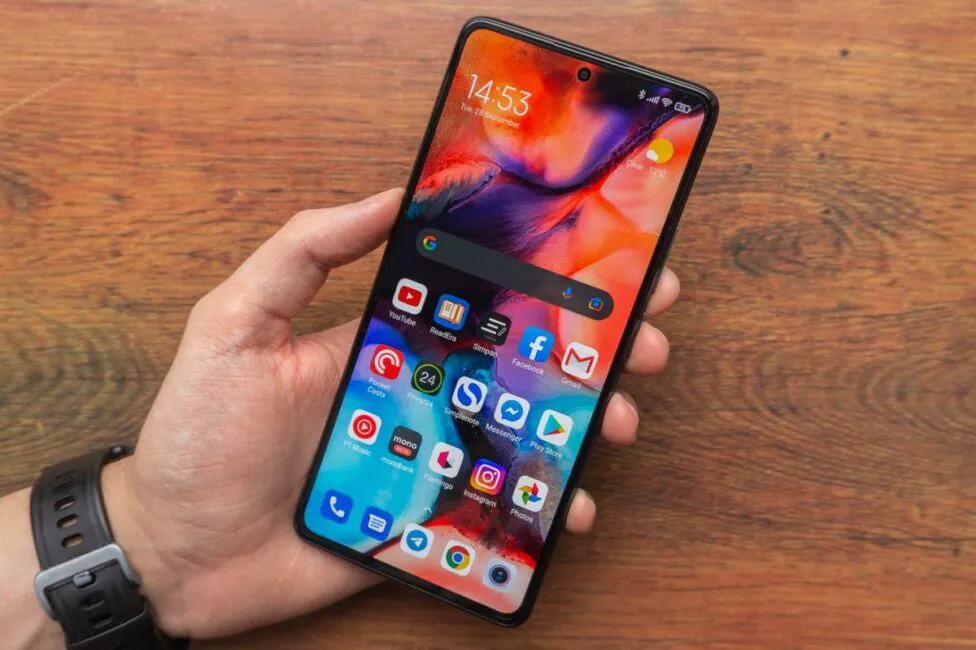
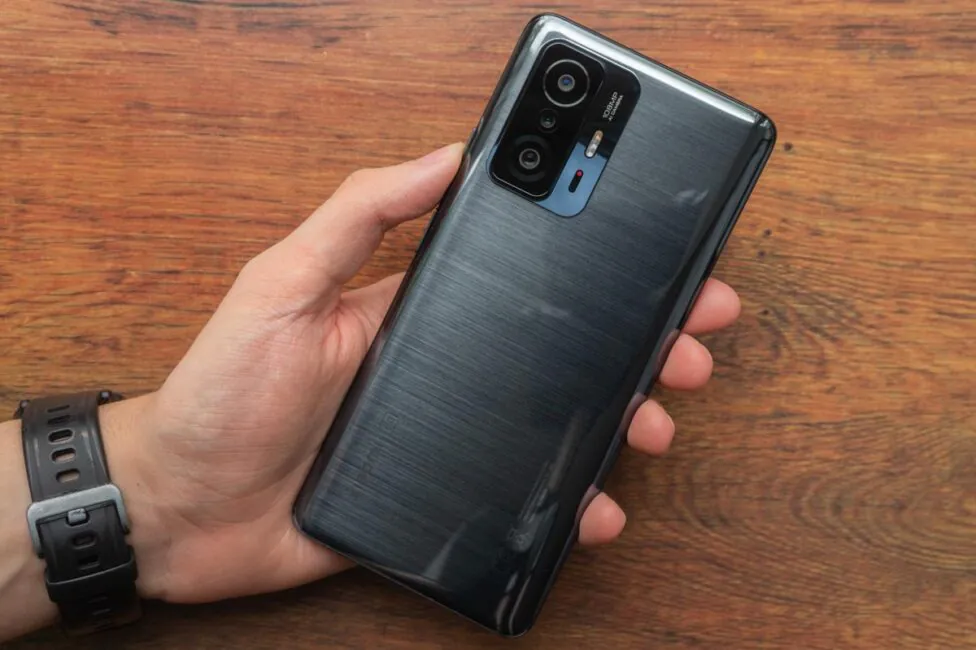
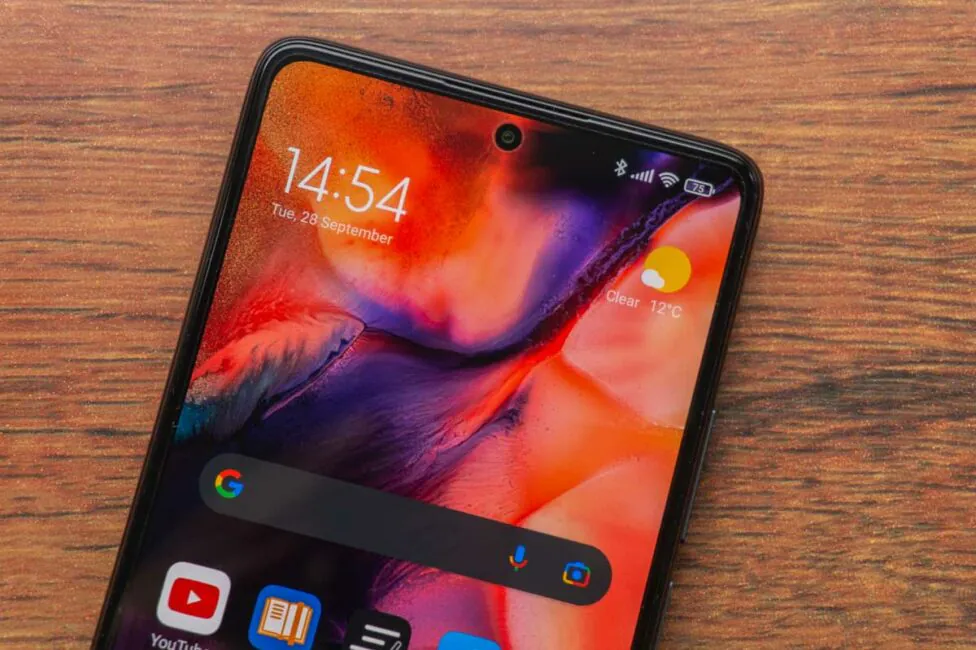
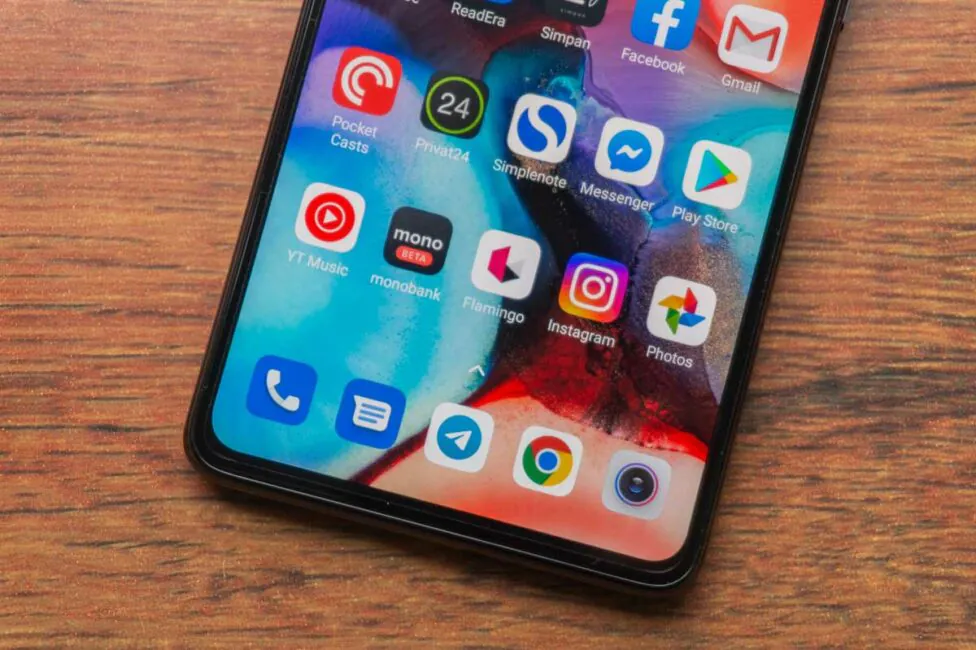

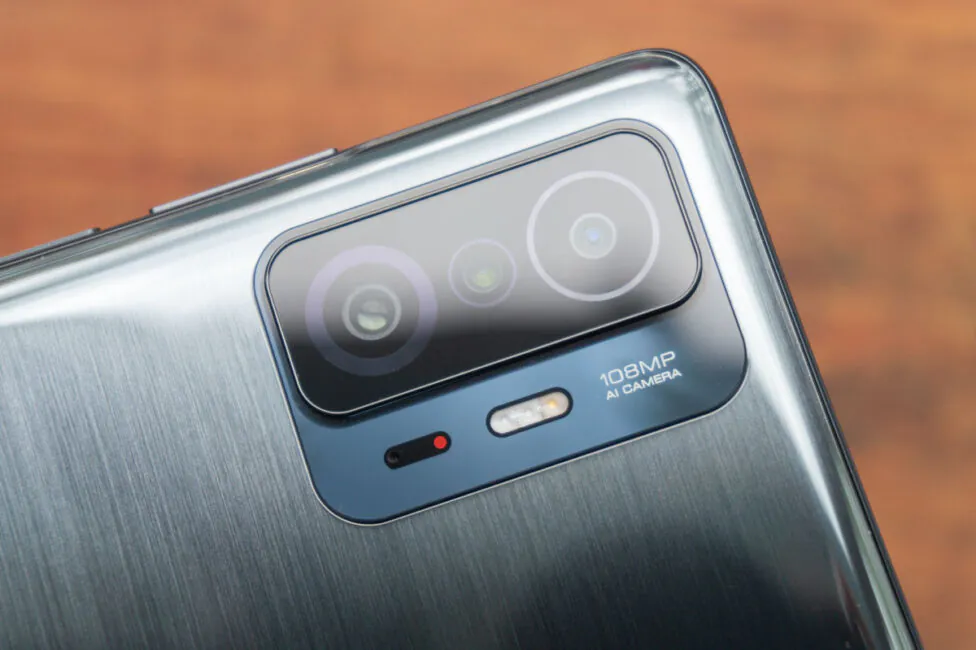
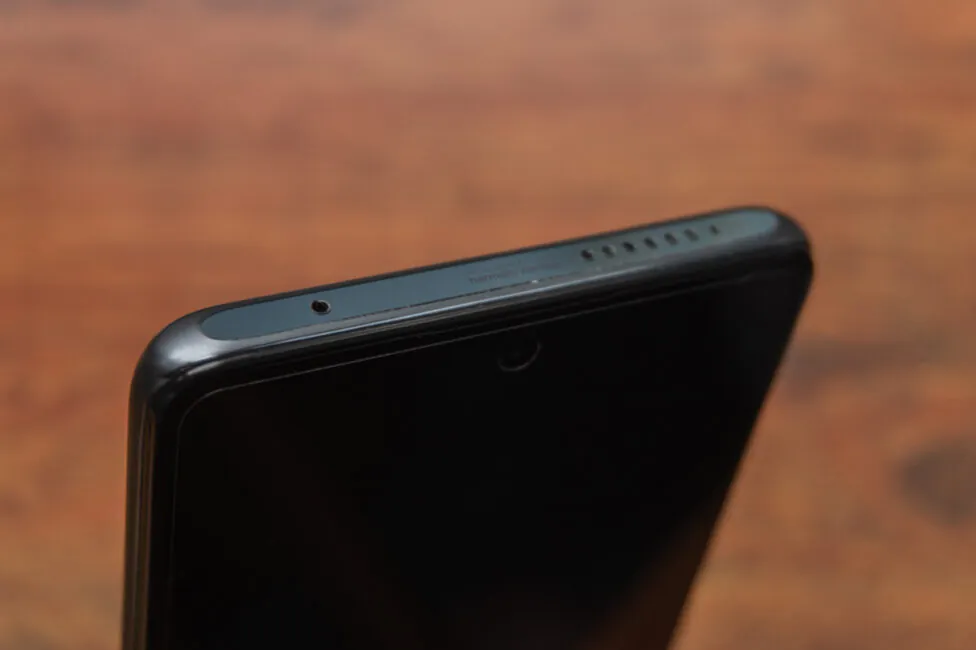
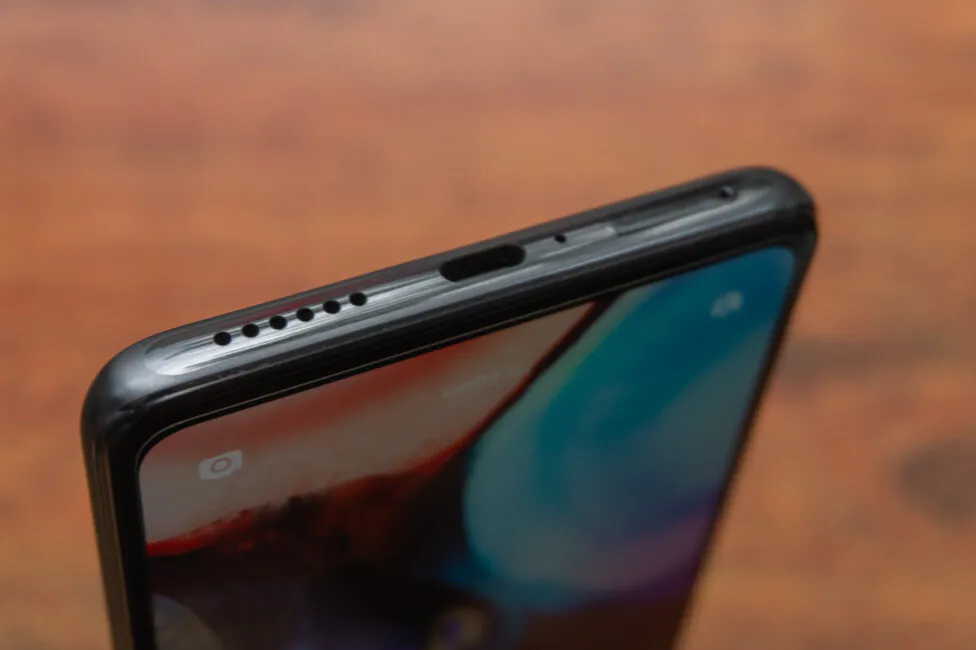
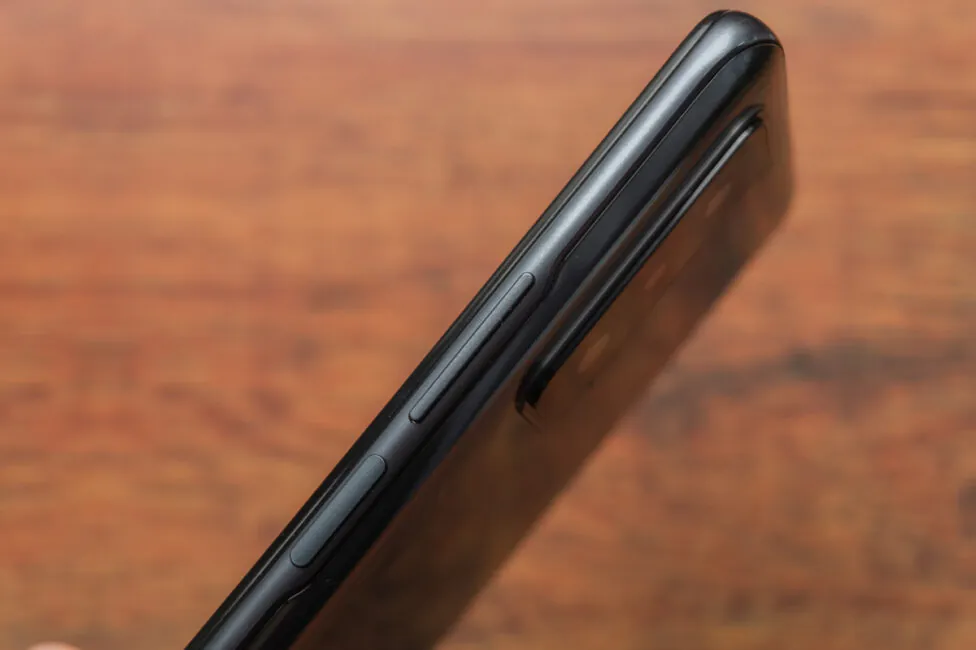
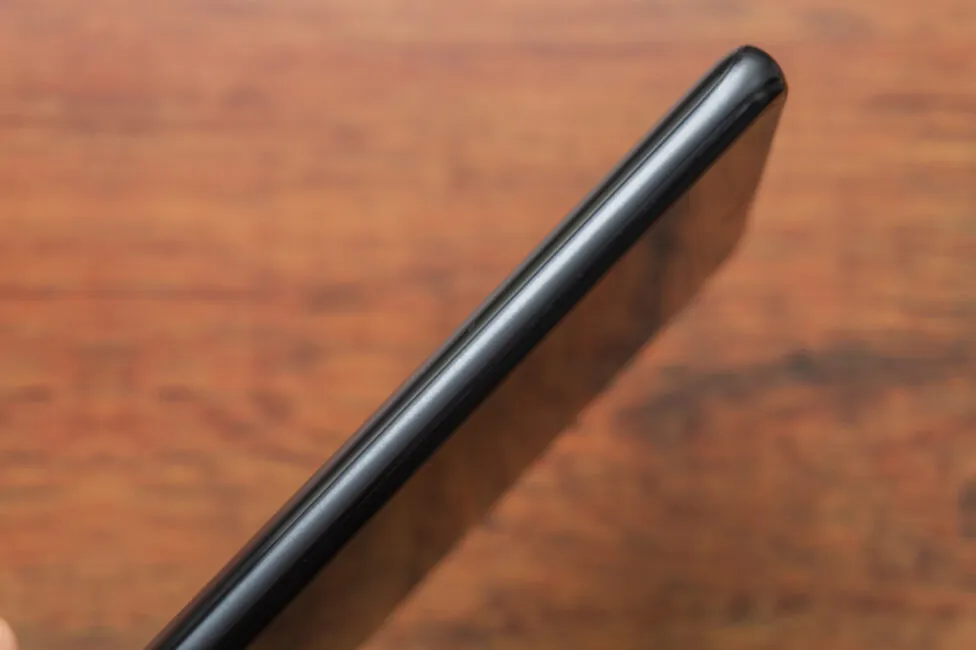
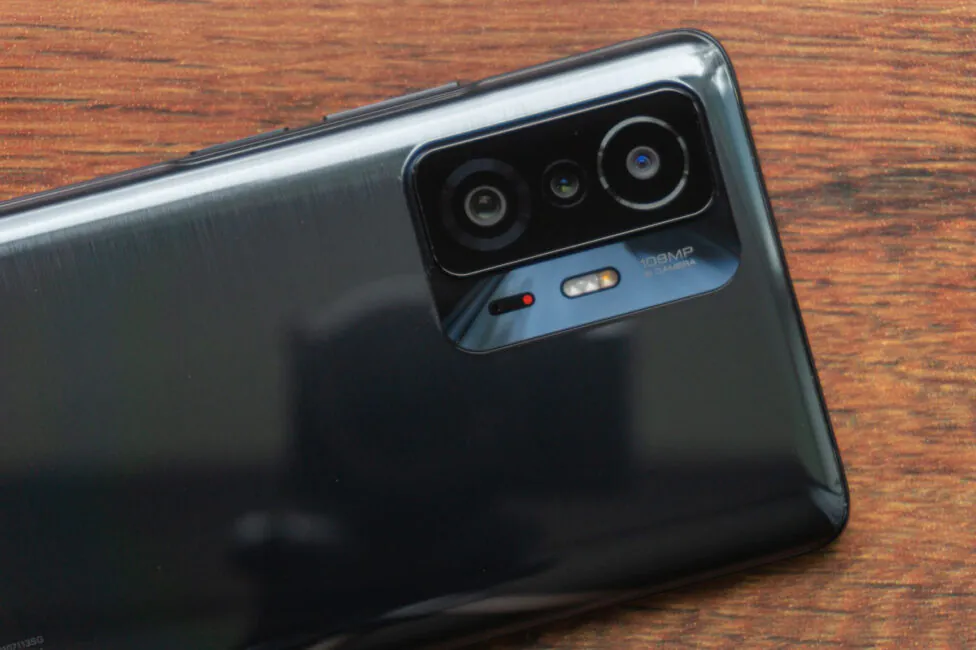
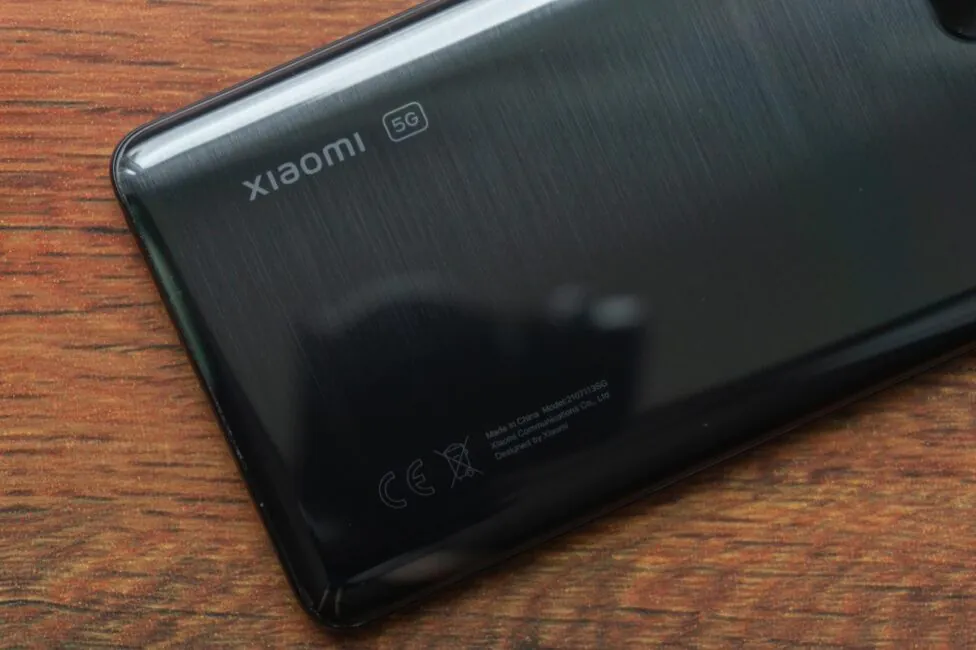


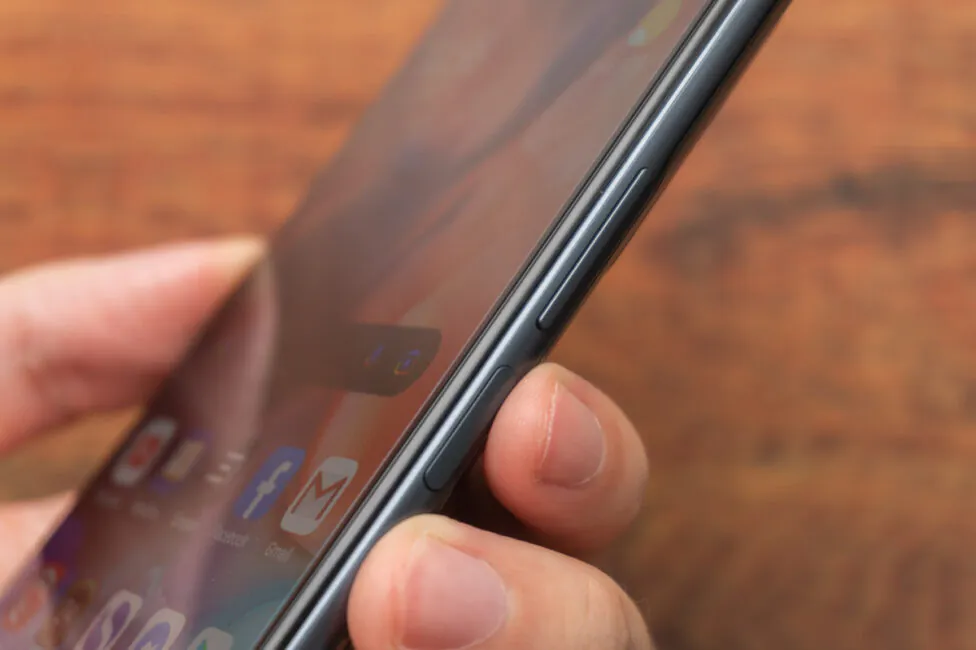

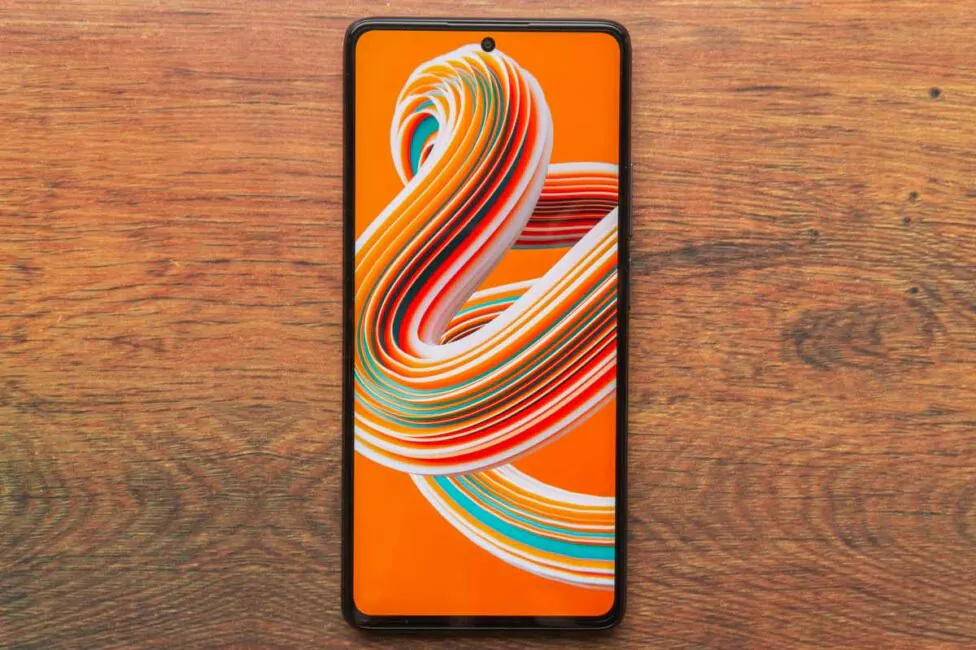
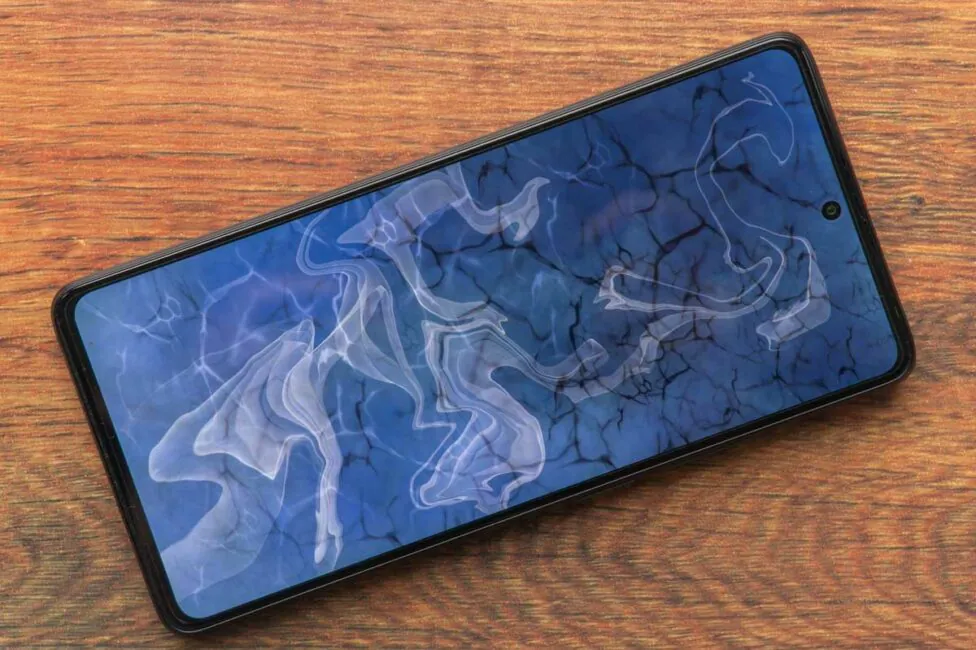











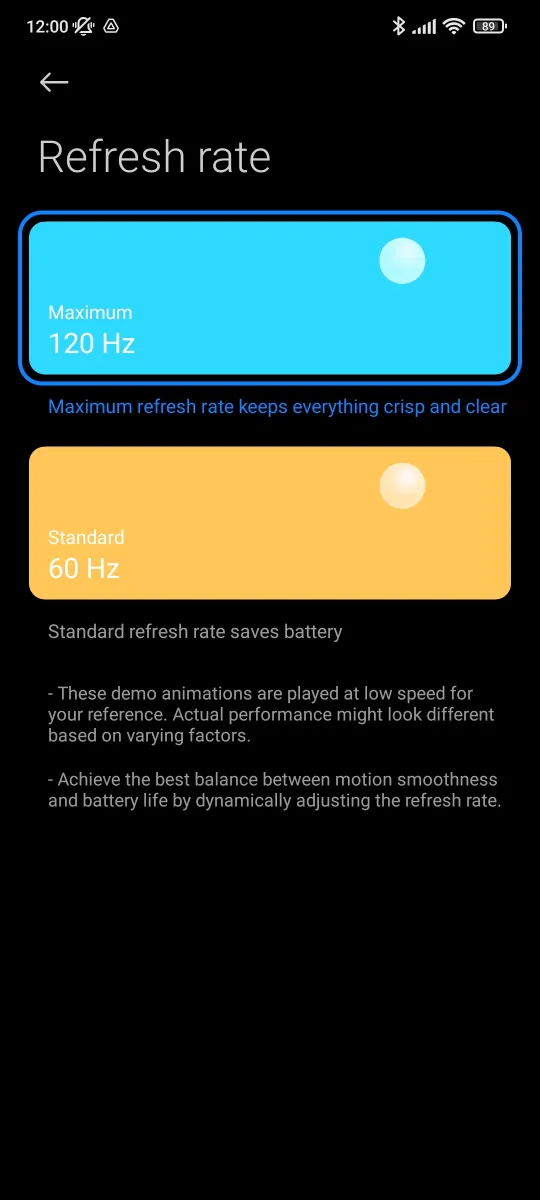









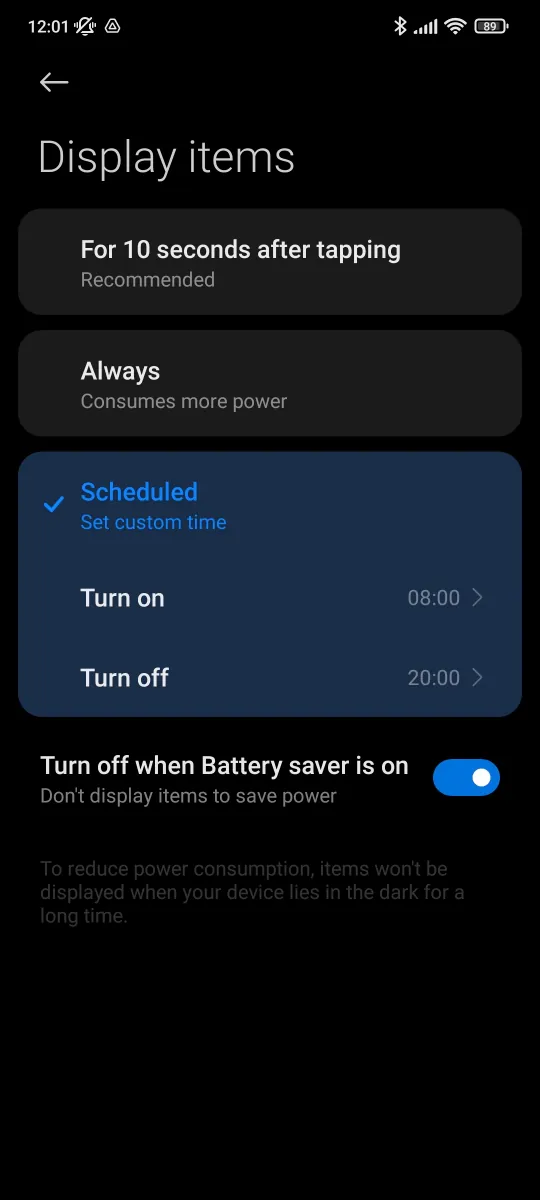
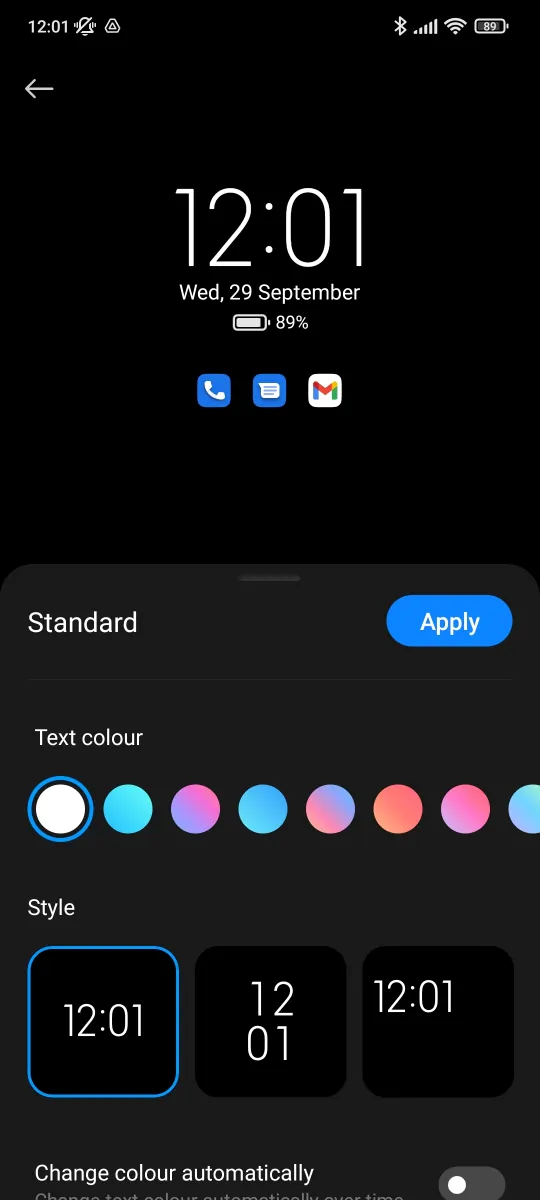
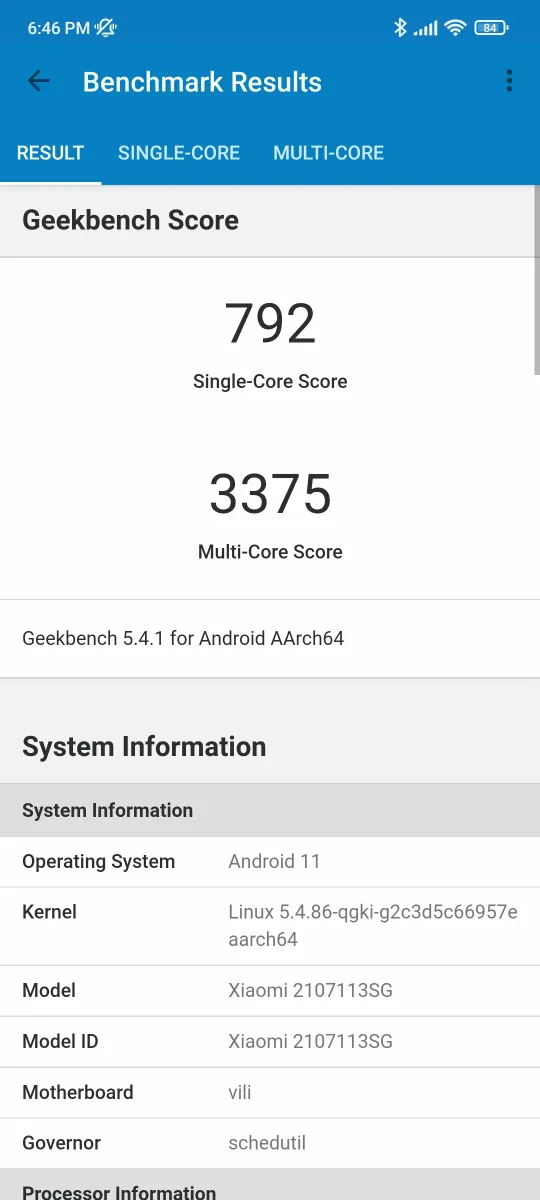



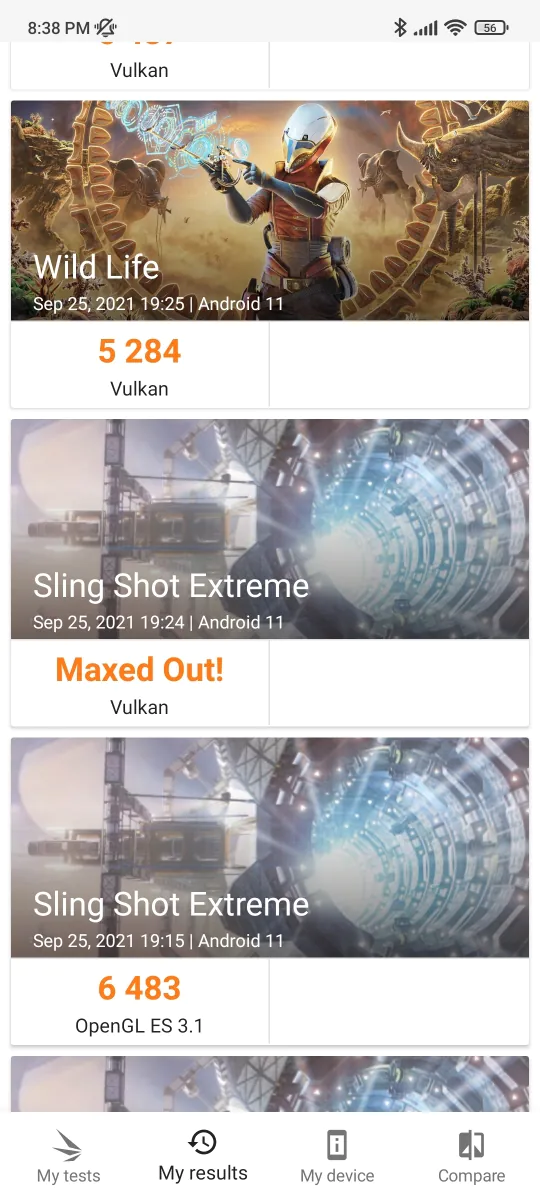

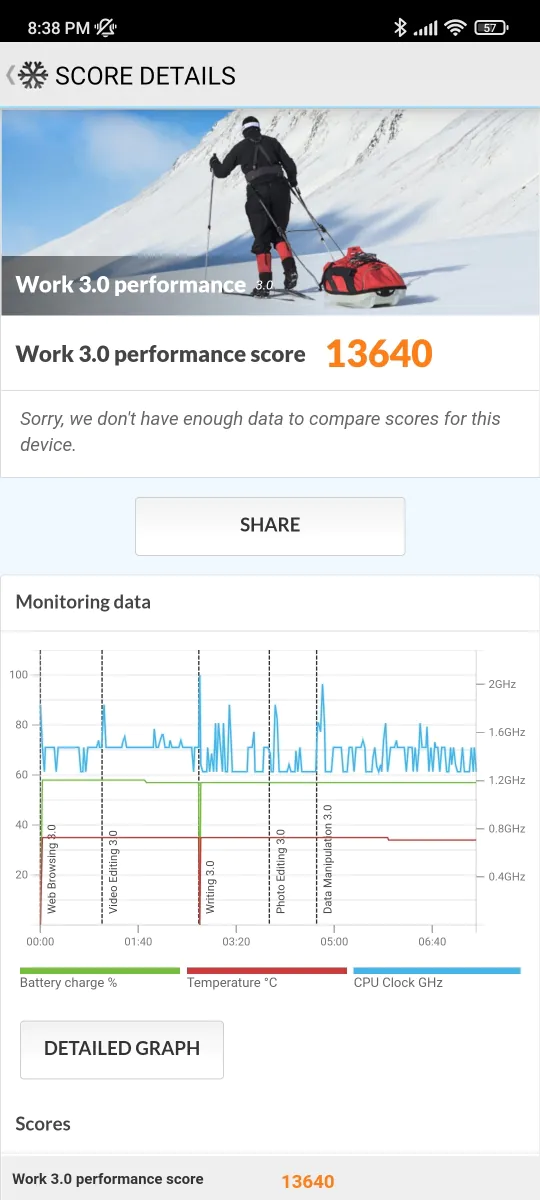

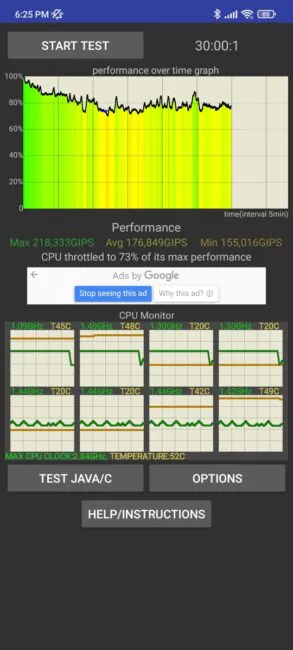






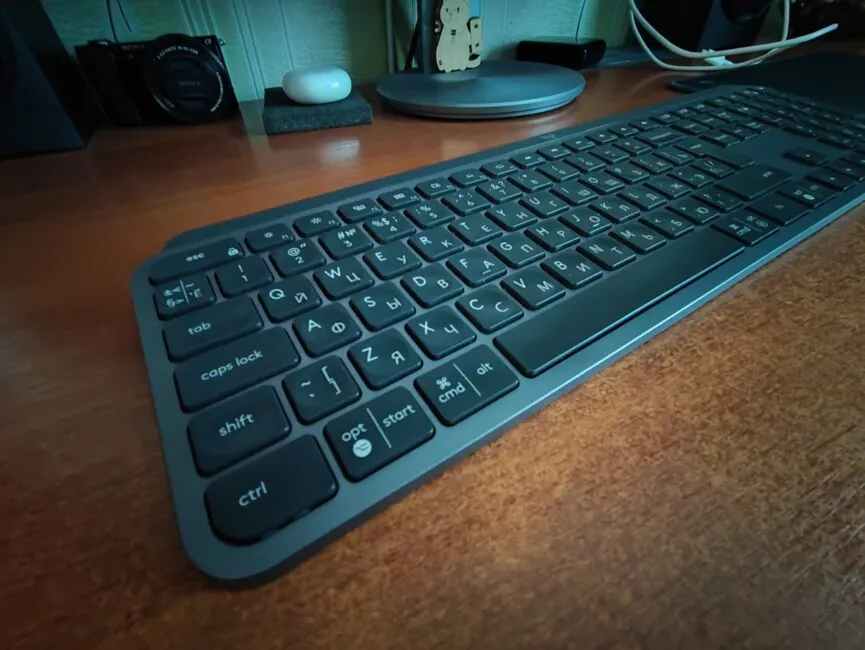




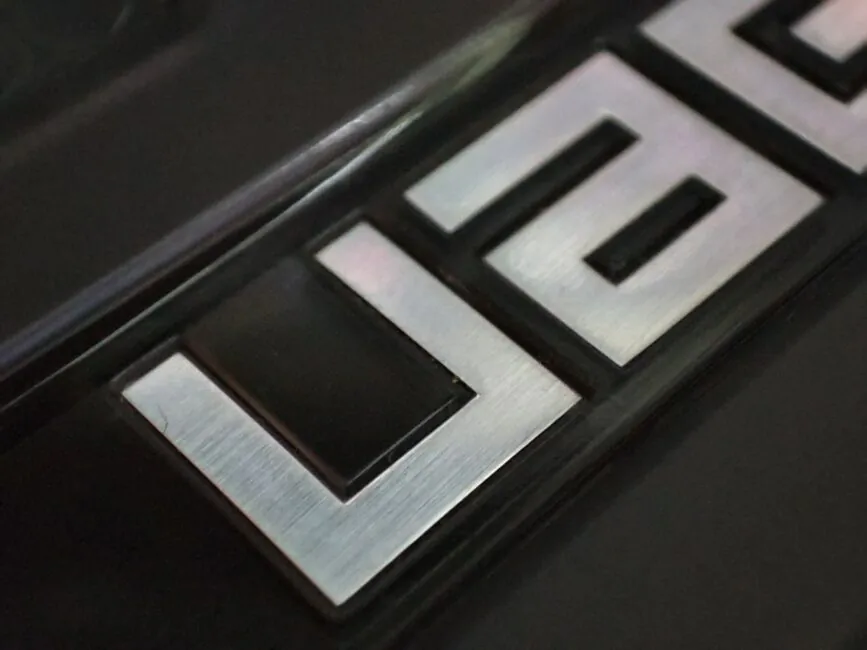

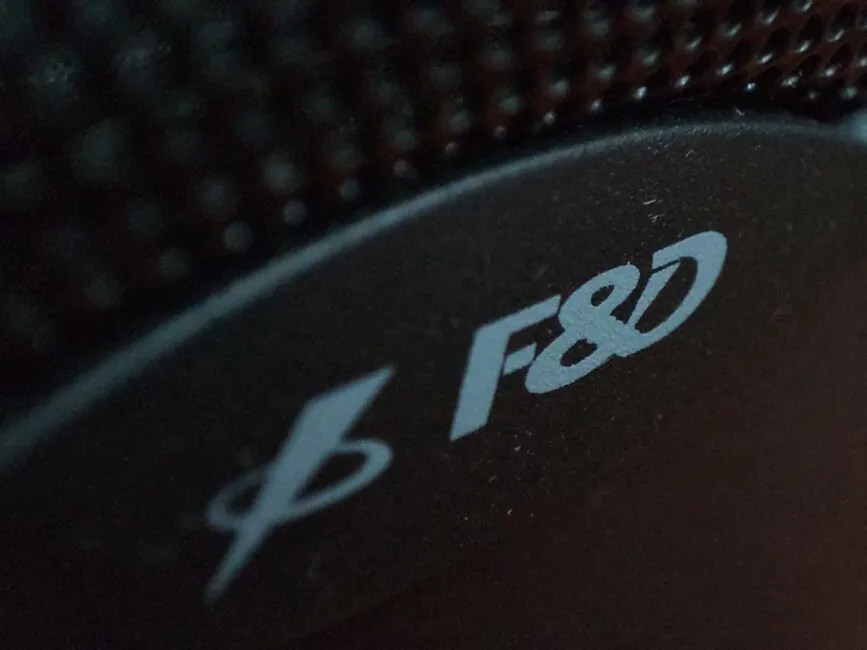
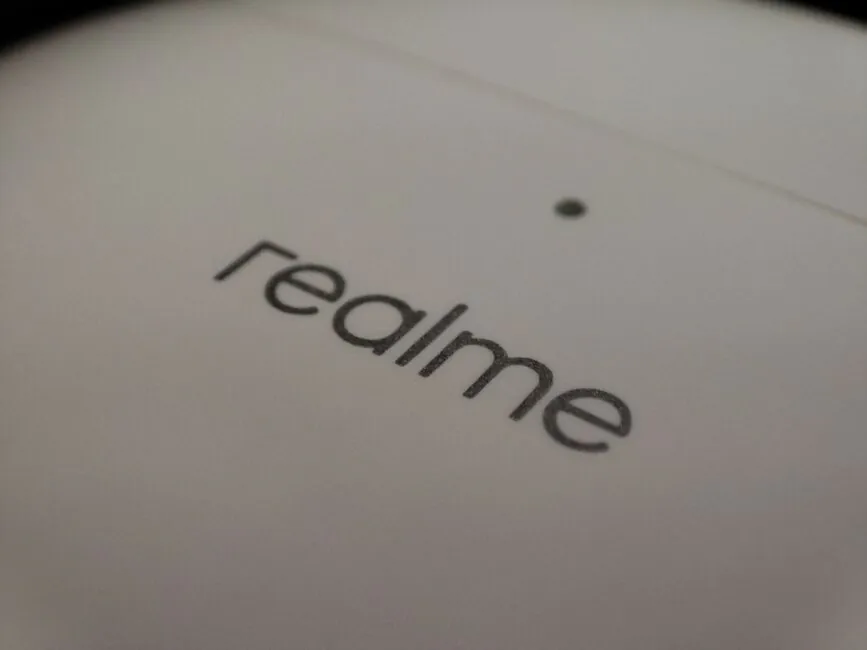

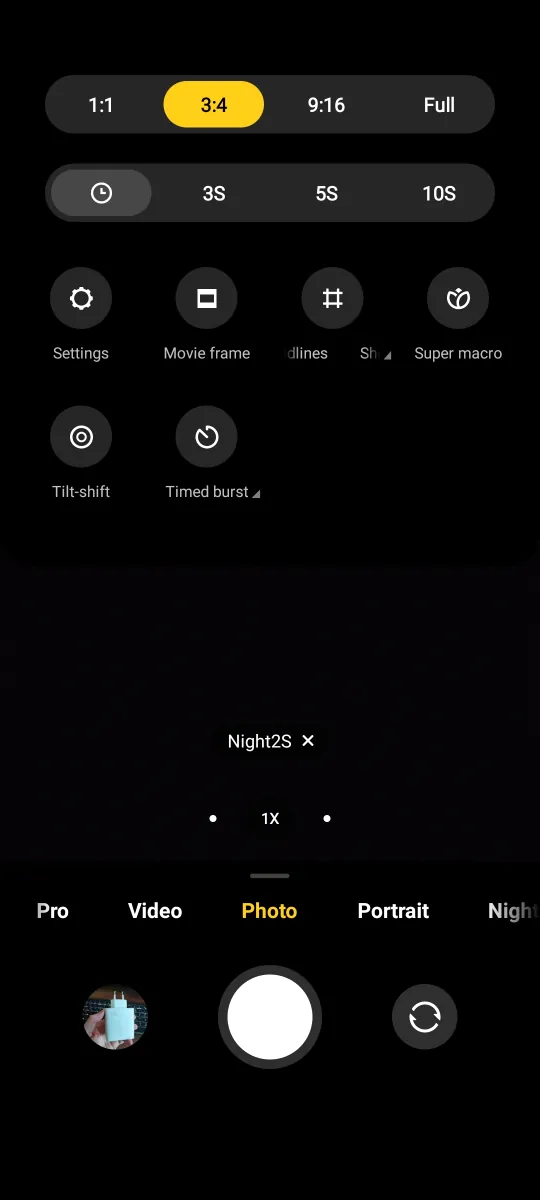


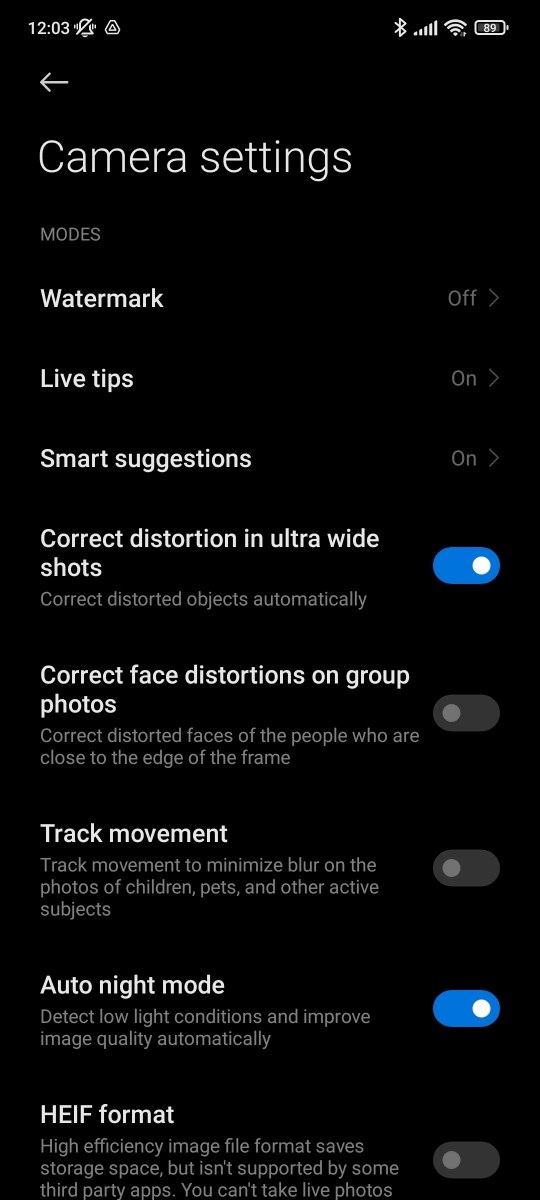
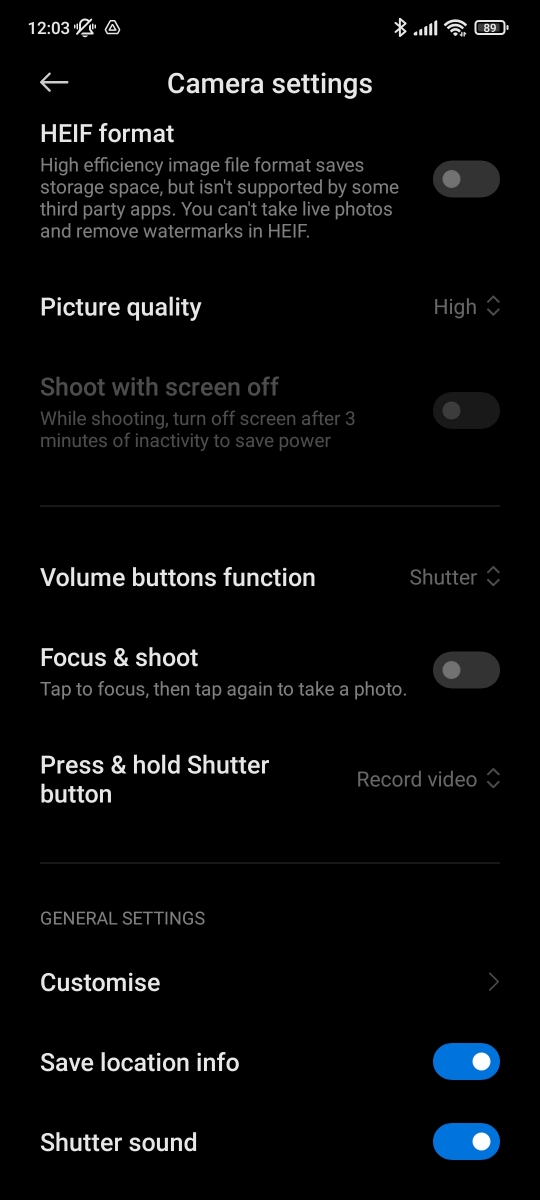



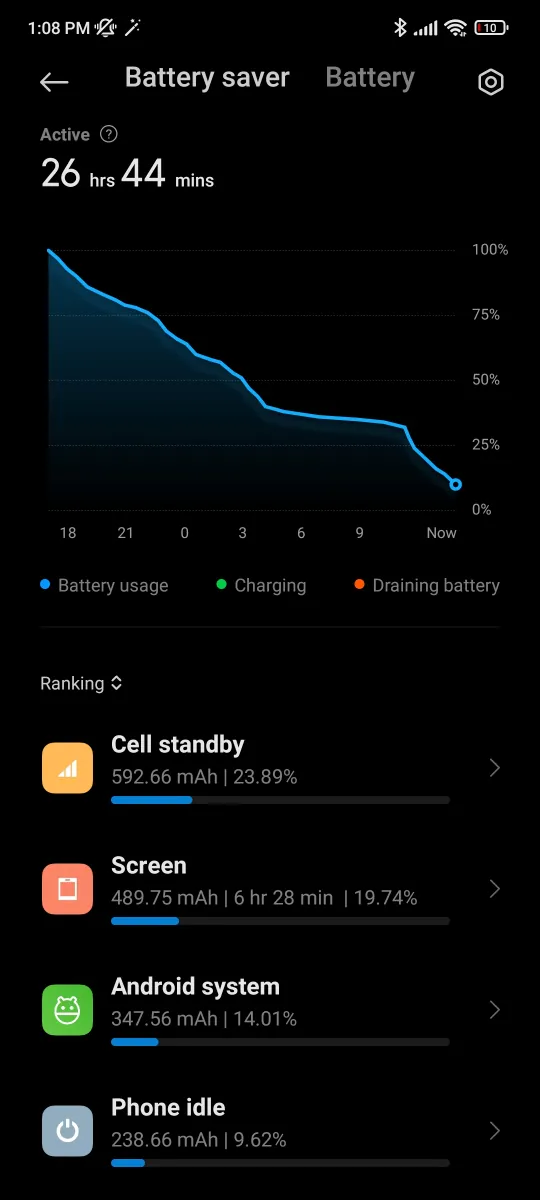















I would add a big disadvantage (that I was not expecting for a flagship phone): usb 2.0 doesn’t allow video output (so you can’t connect to a screen via cable).
I was really disappointed to find this out.